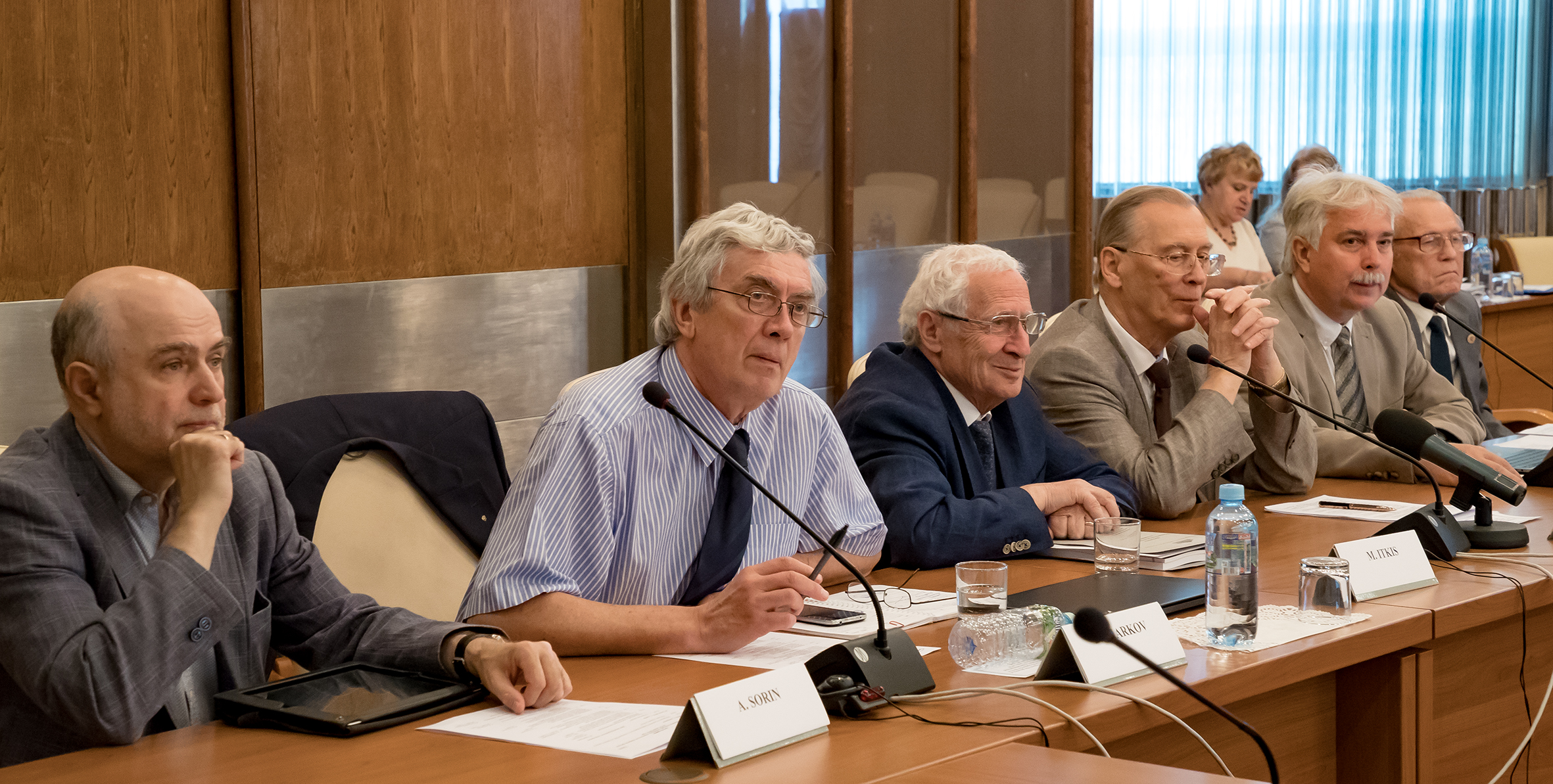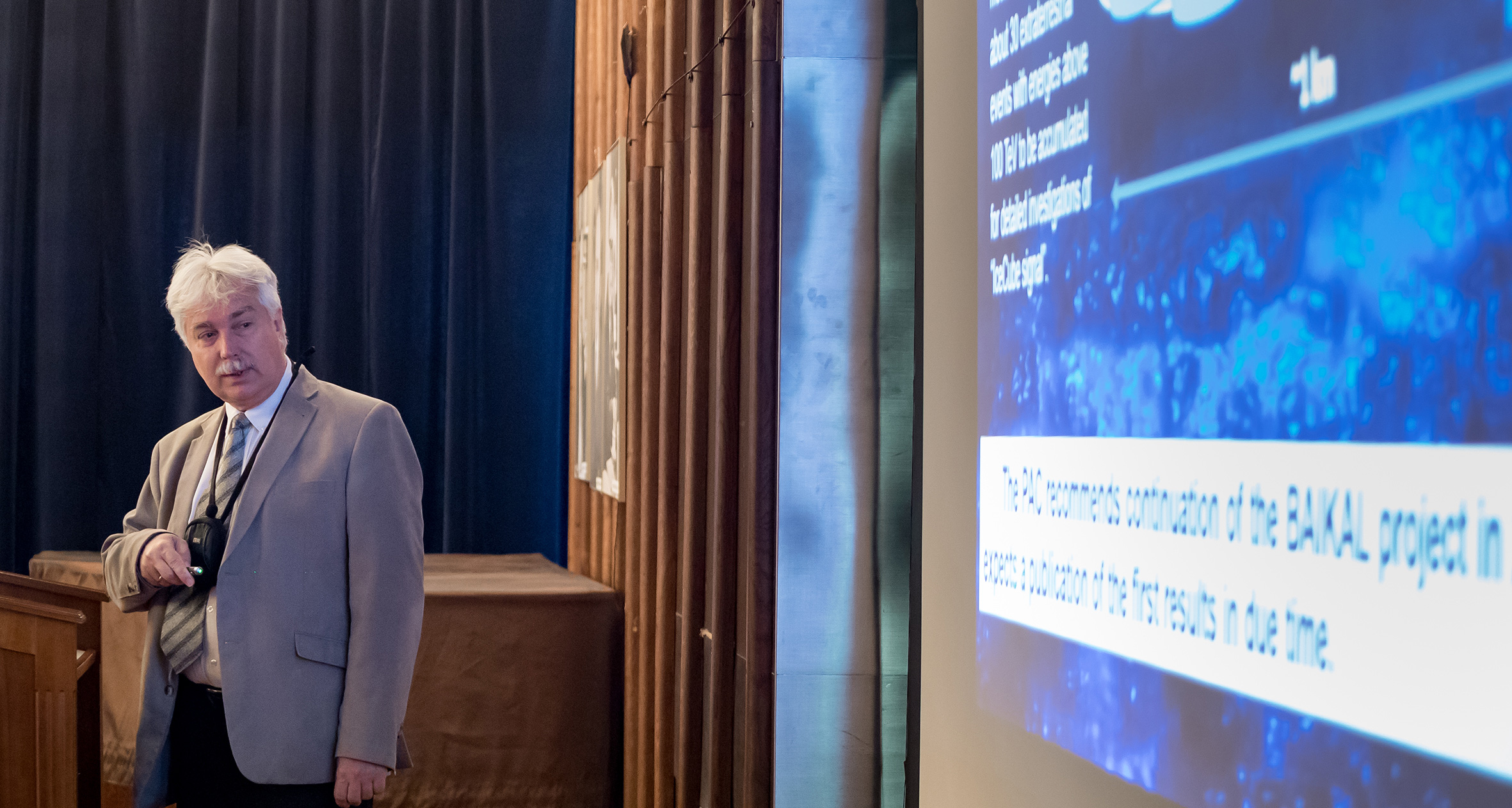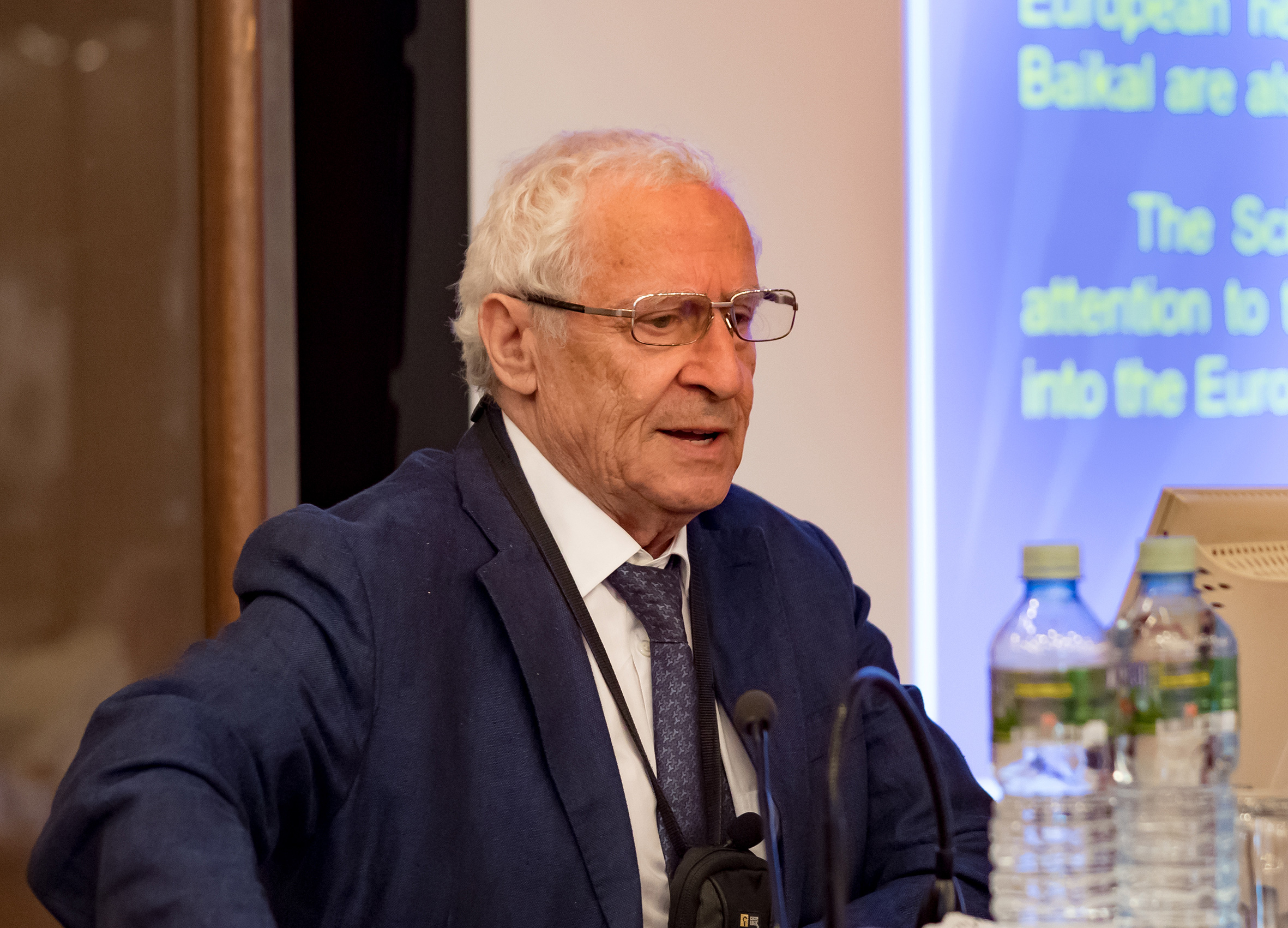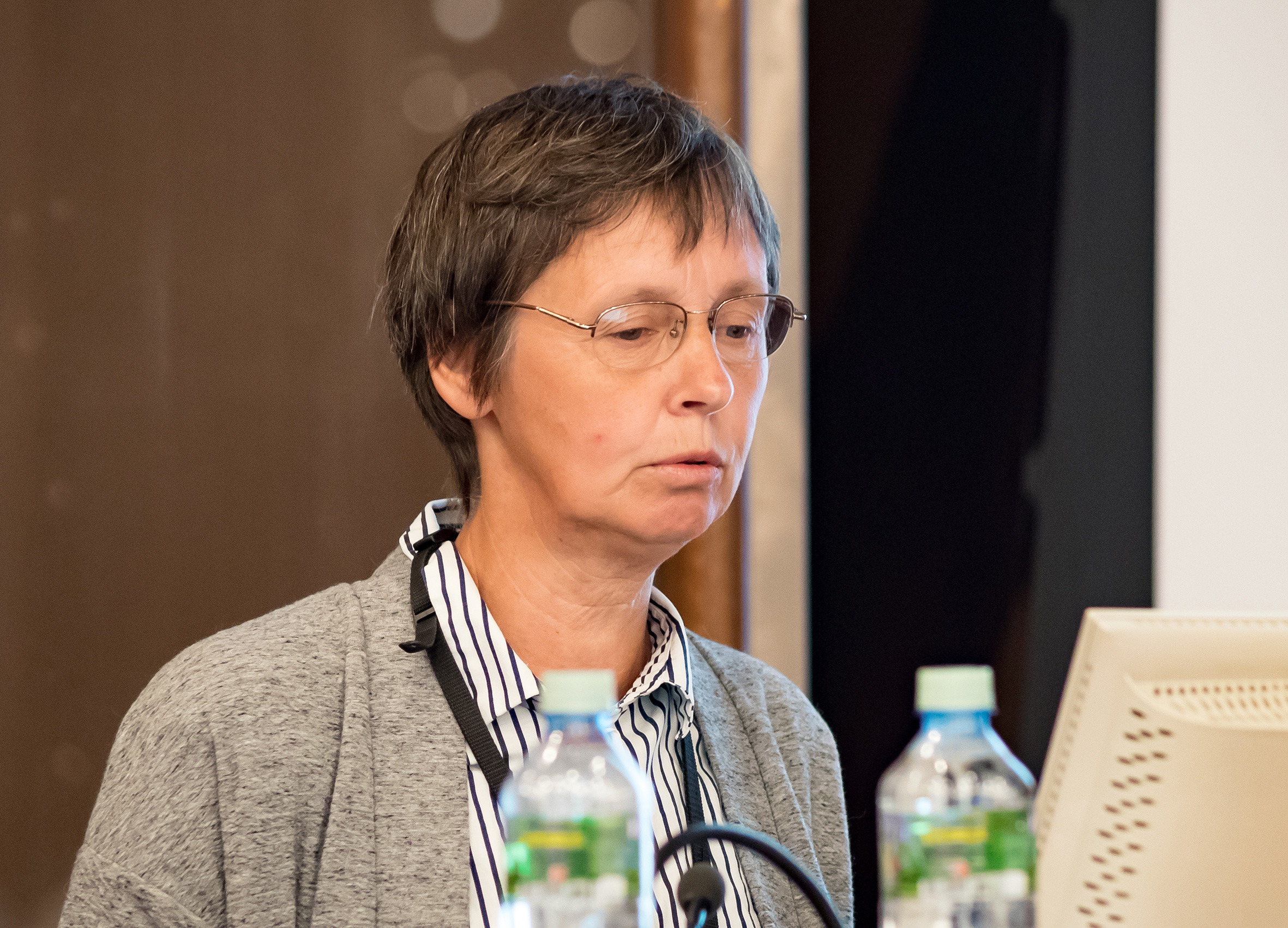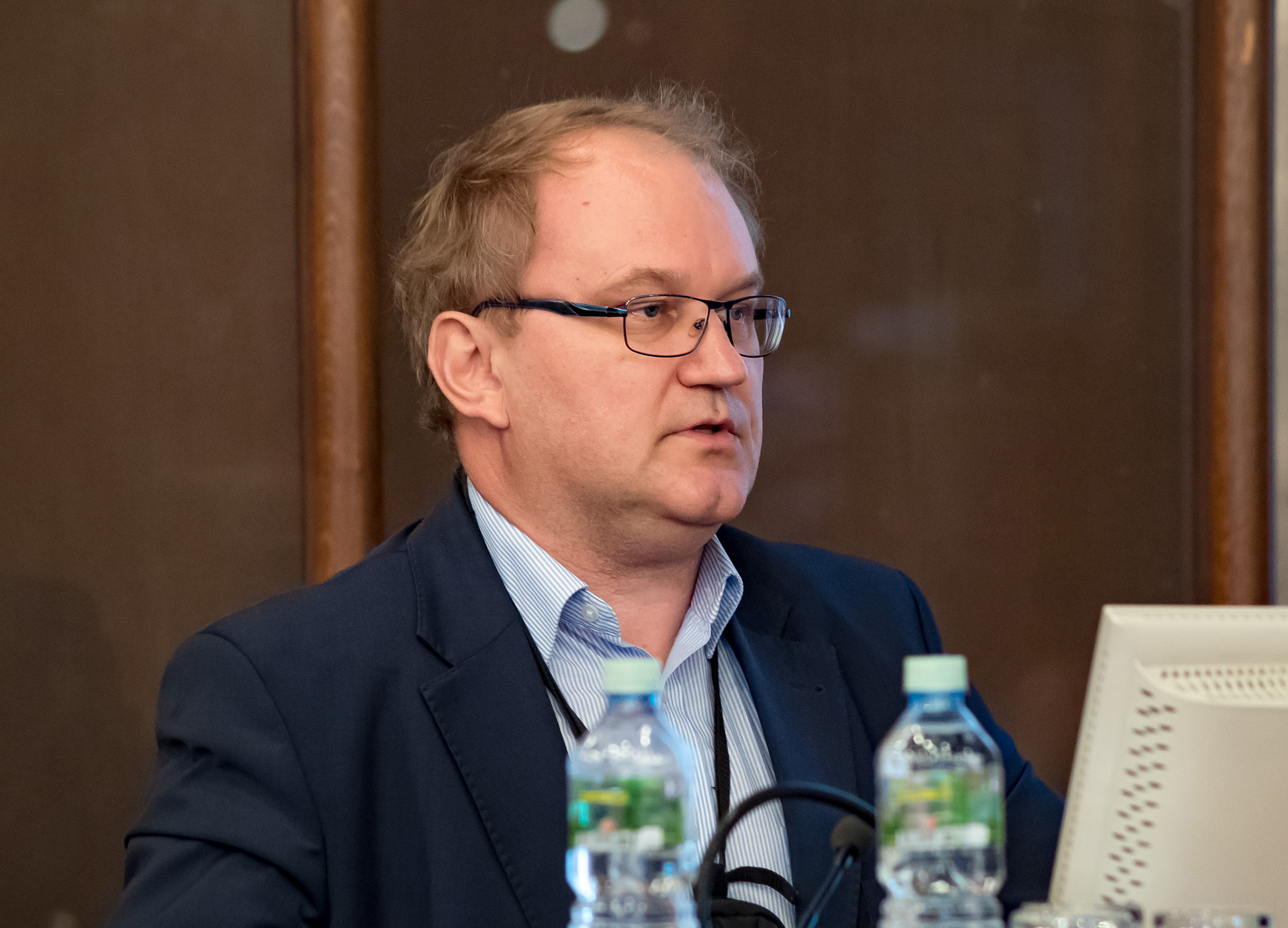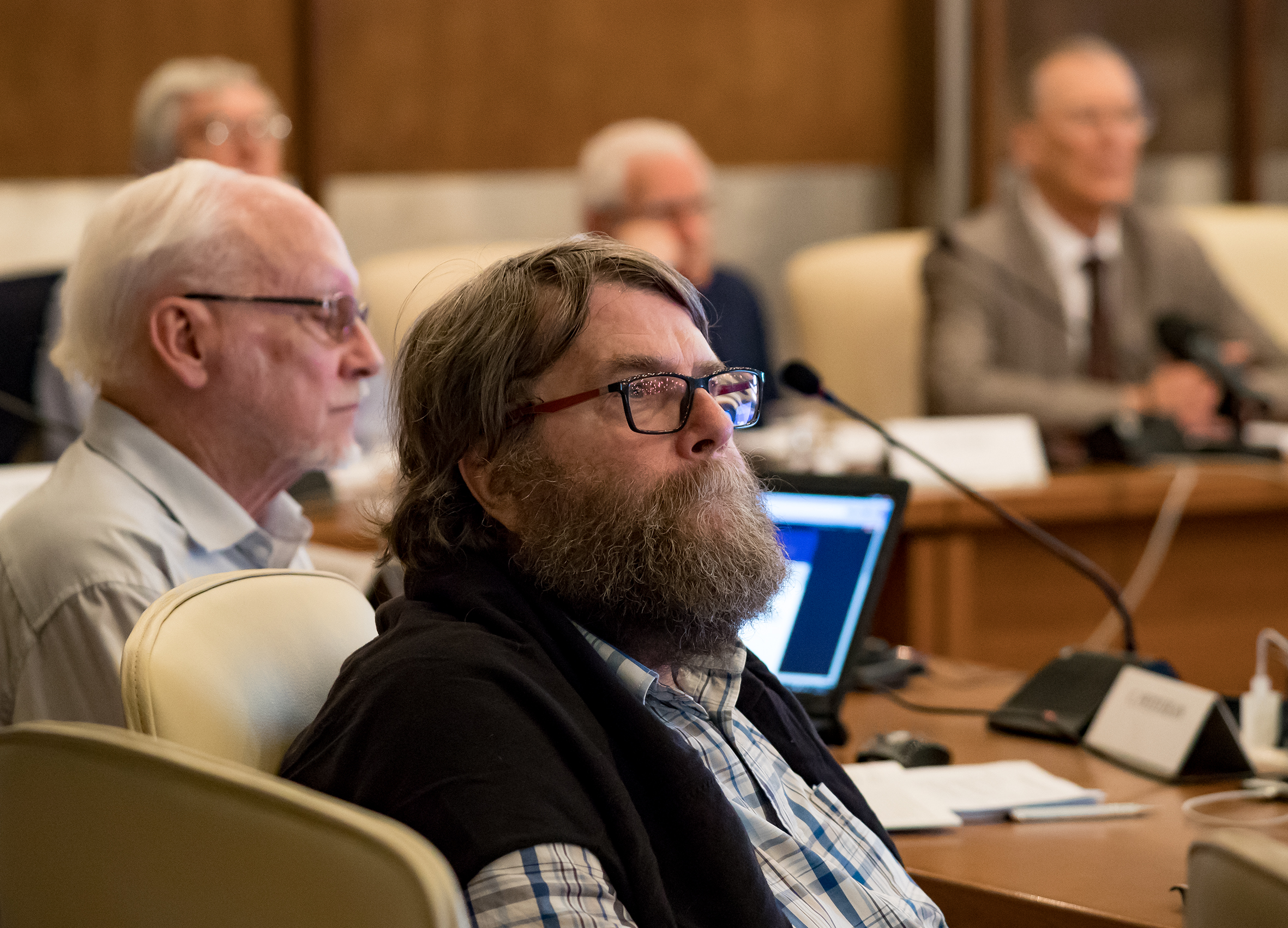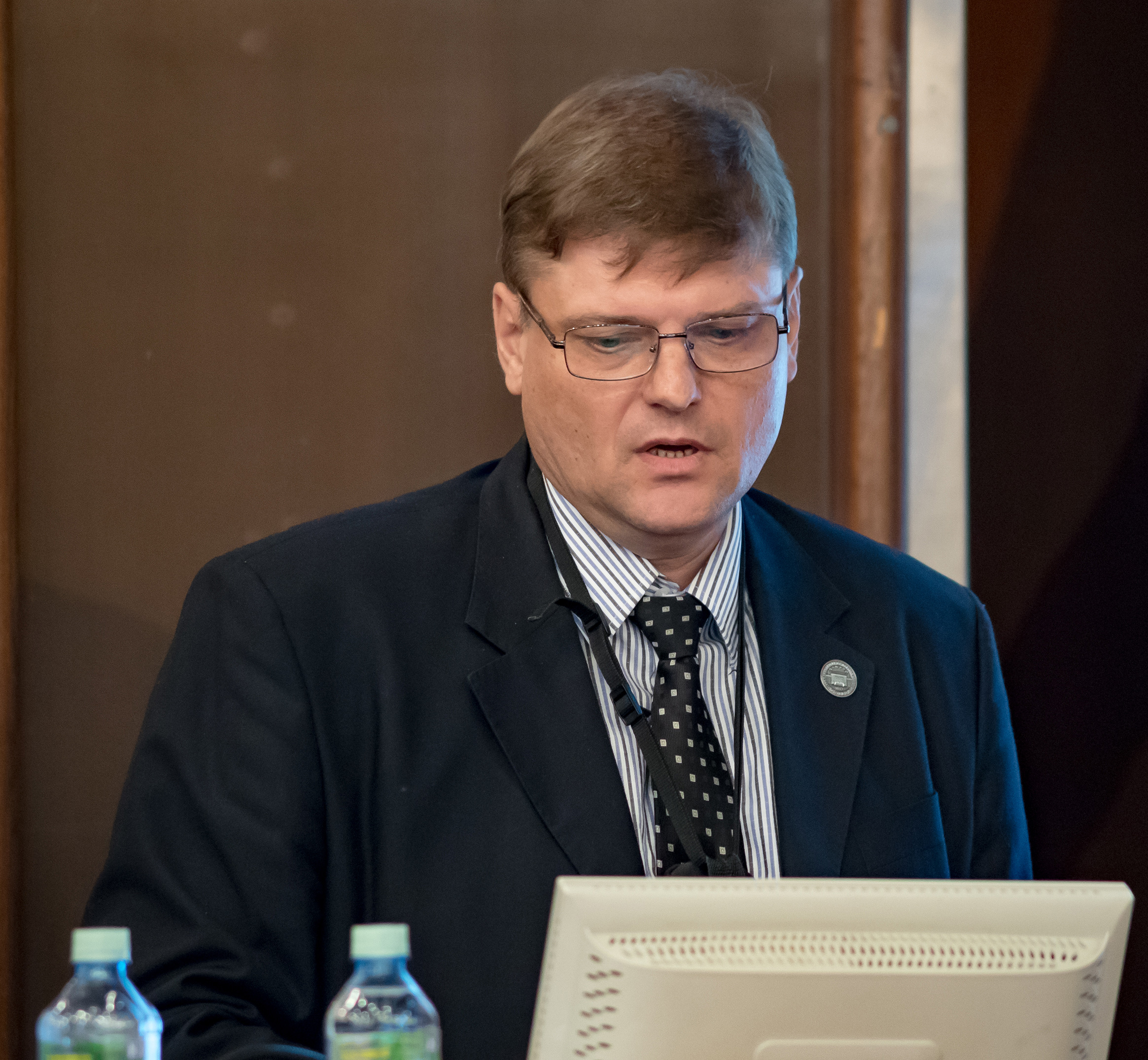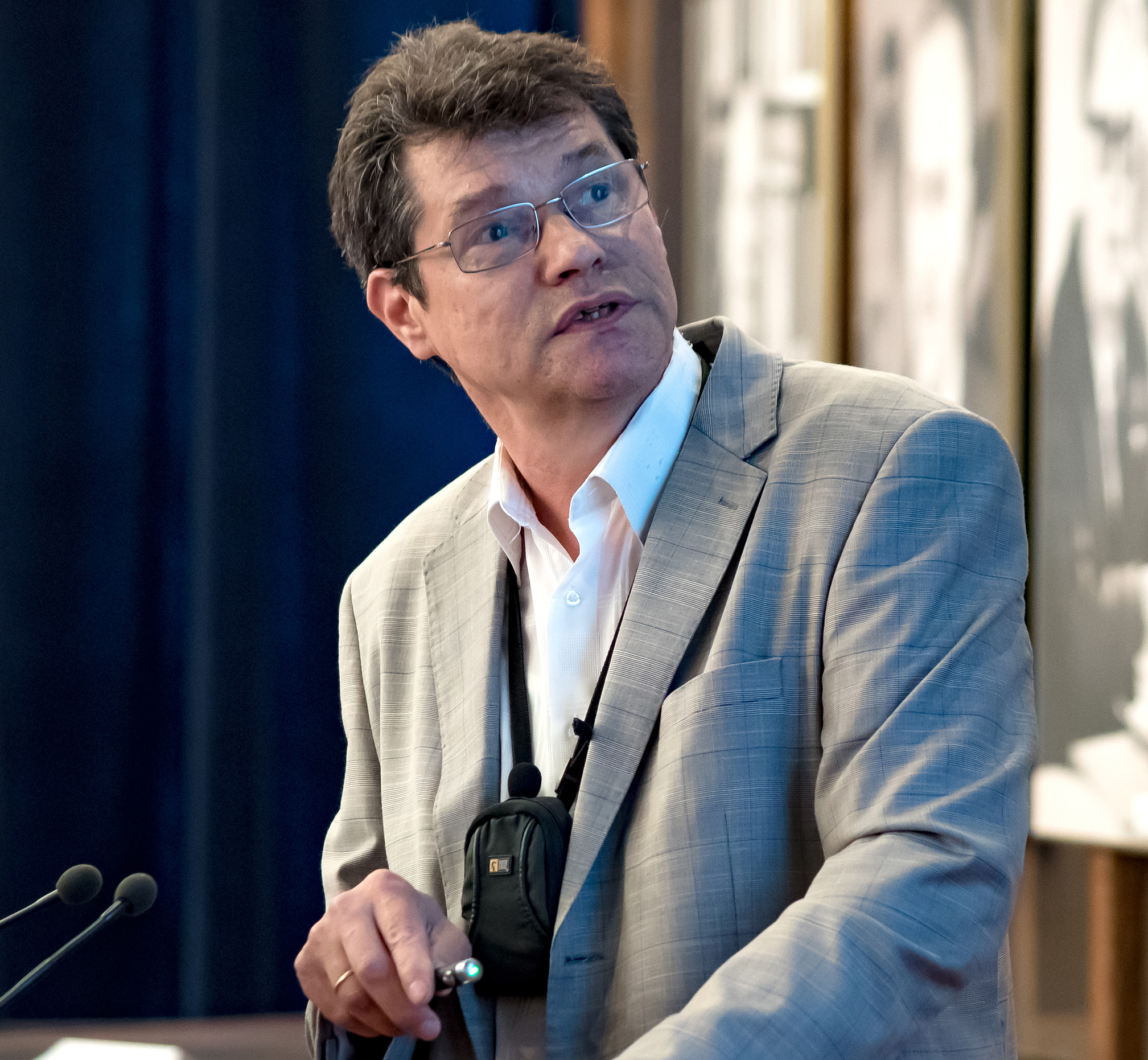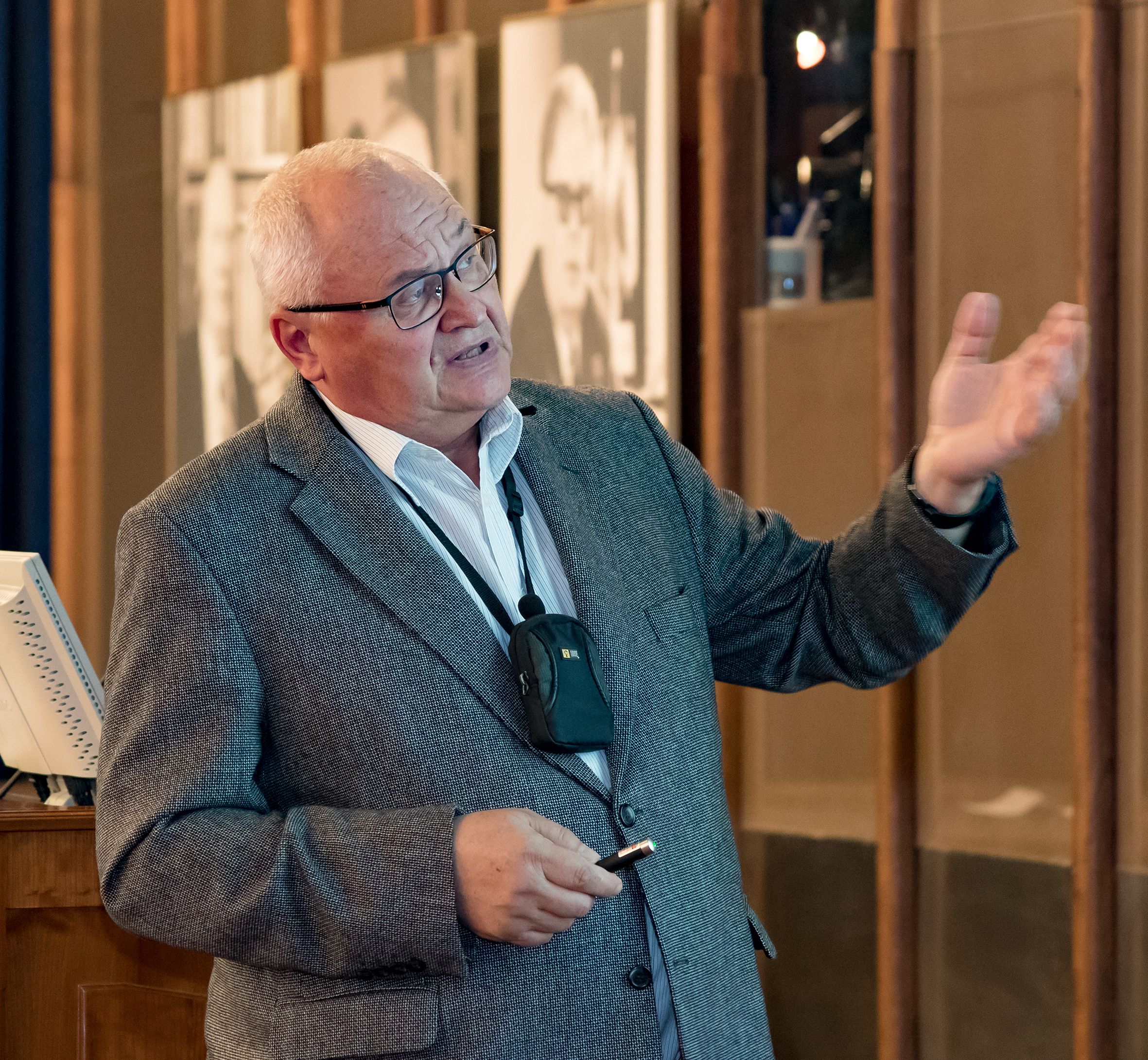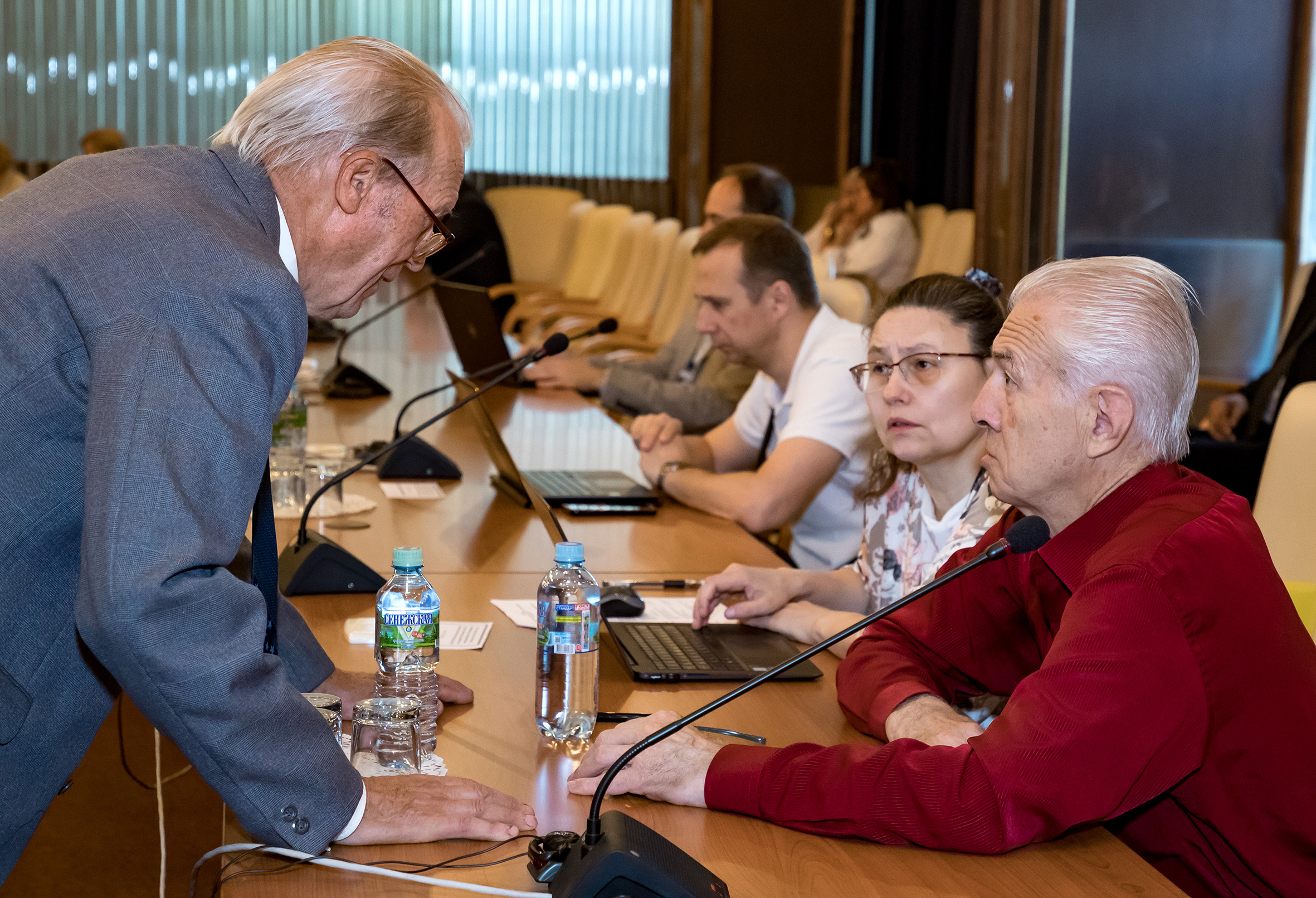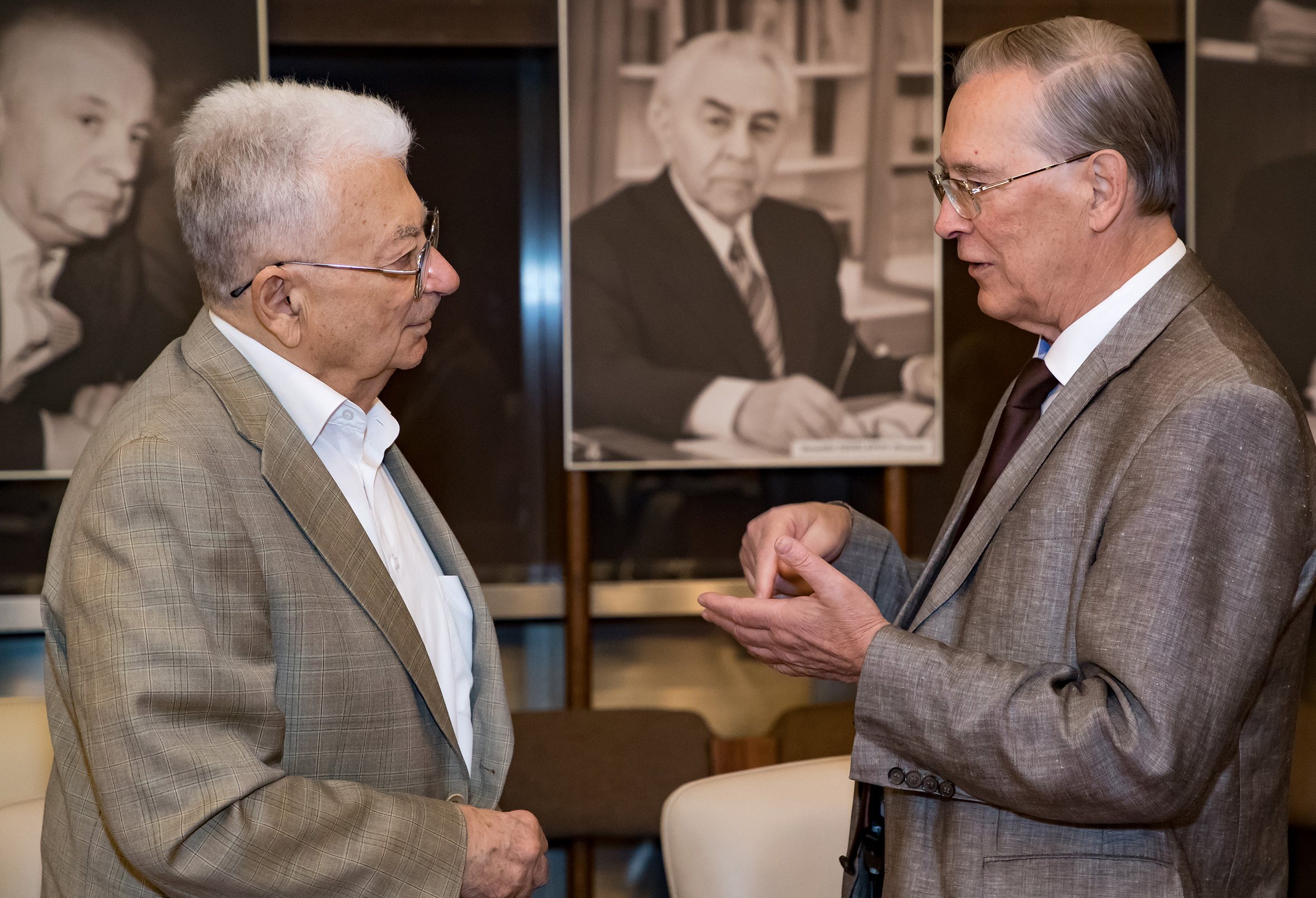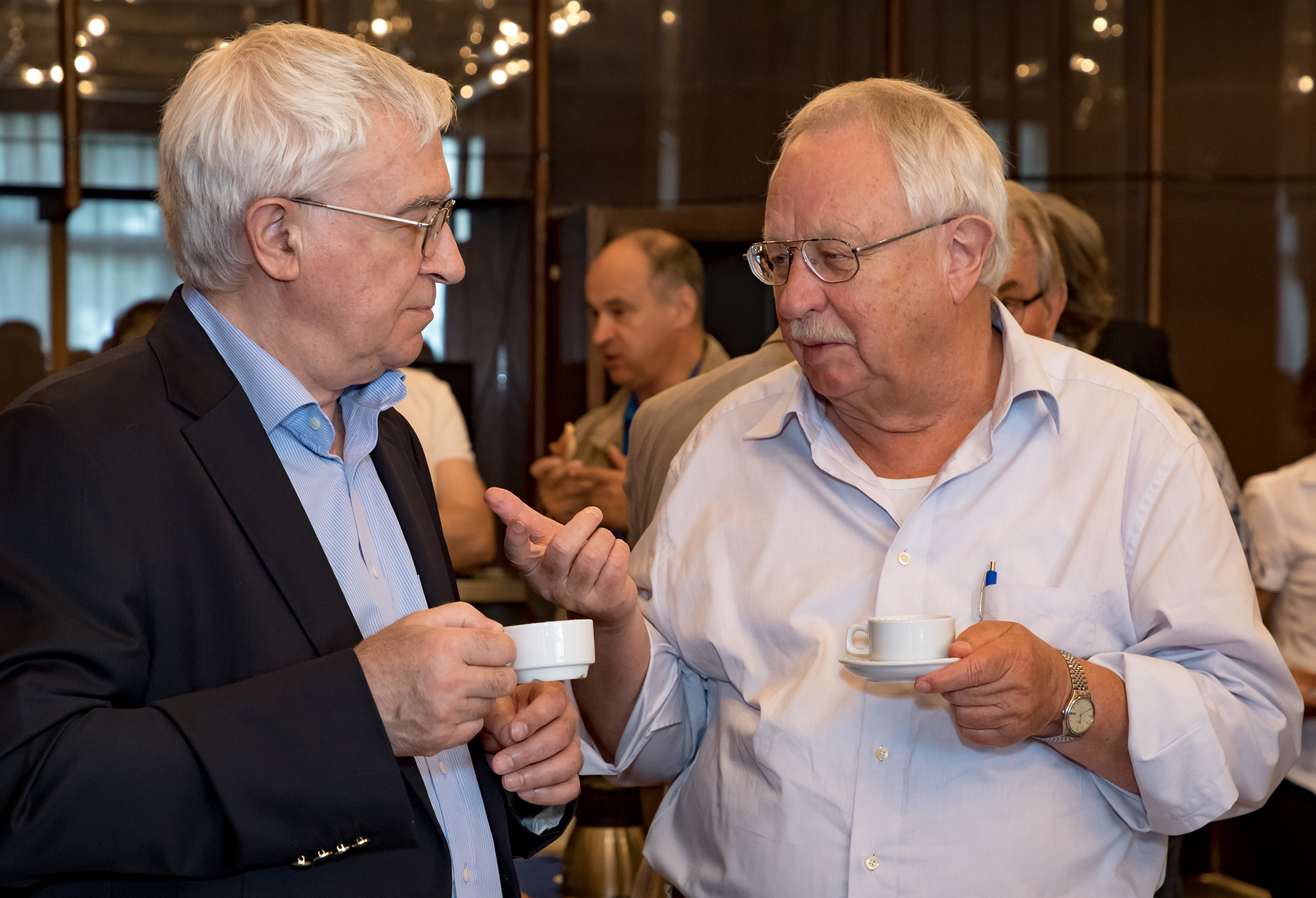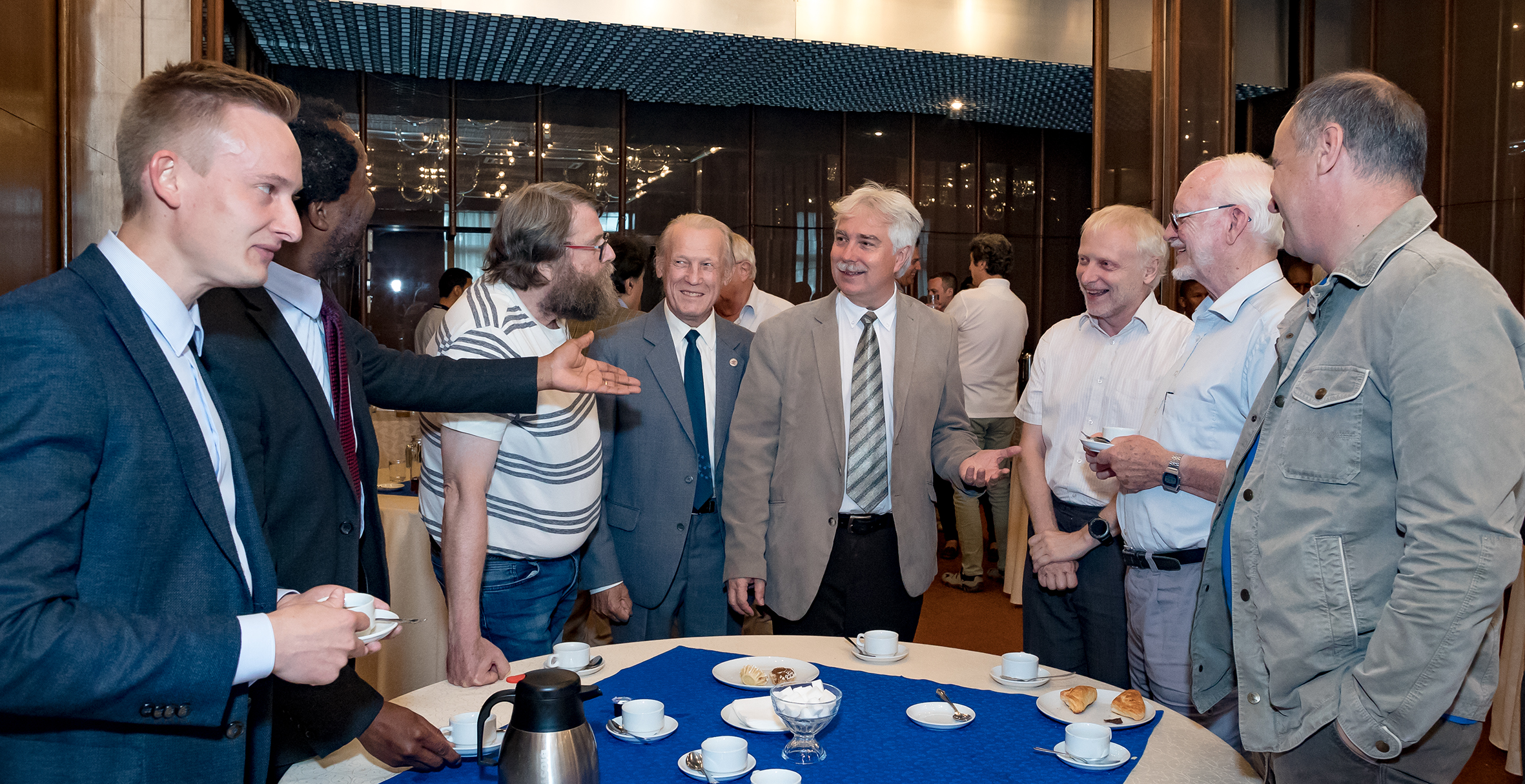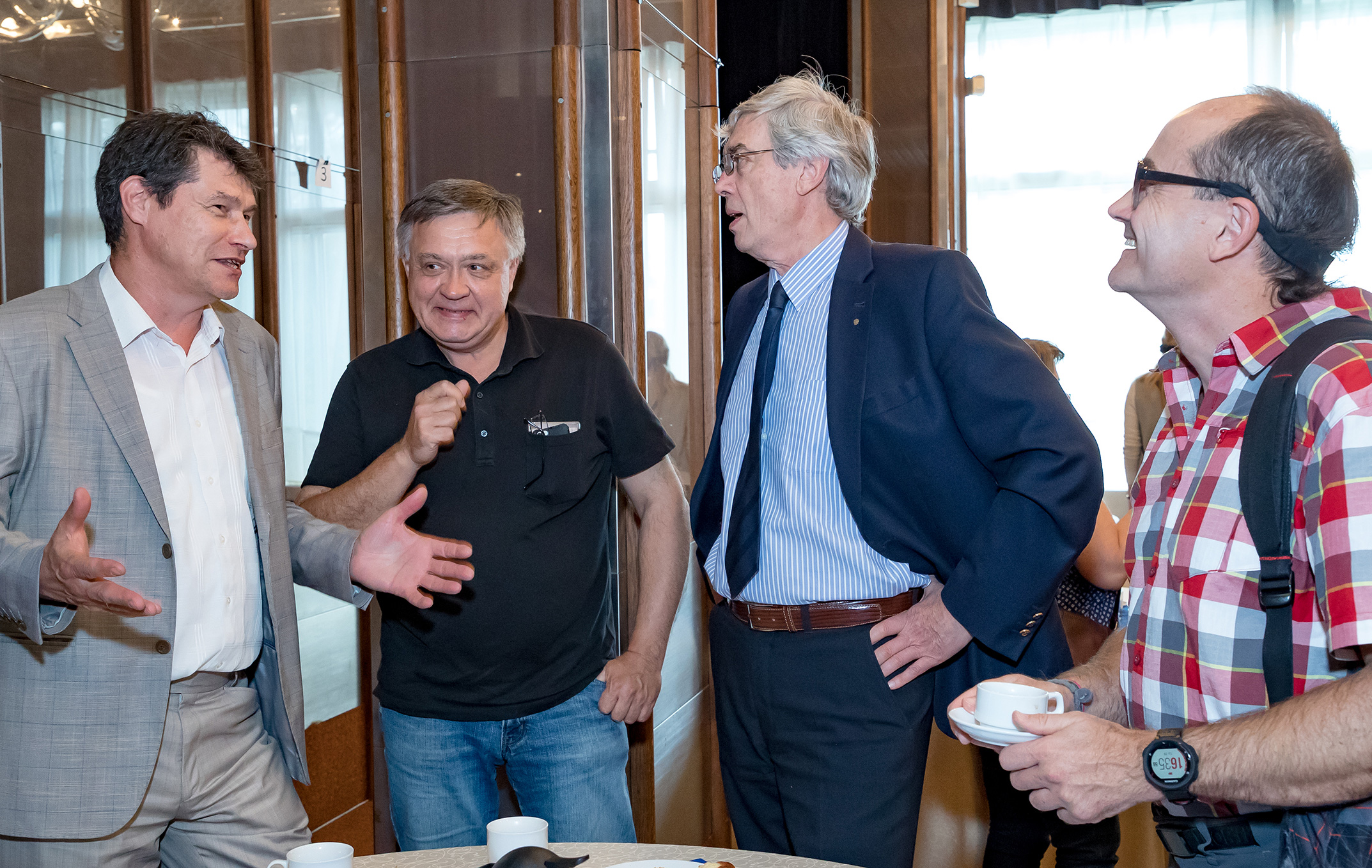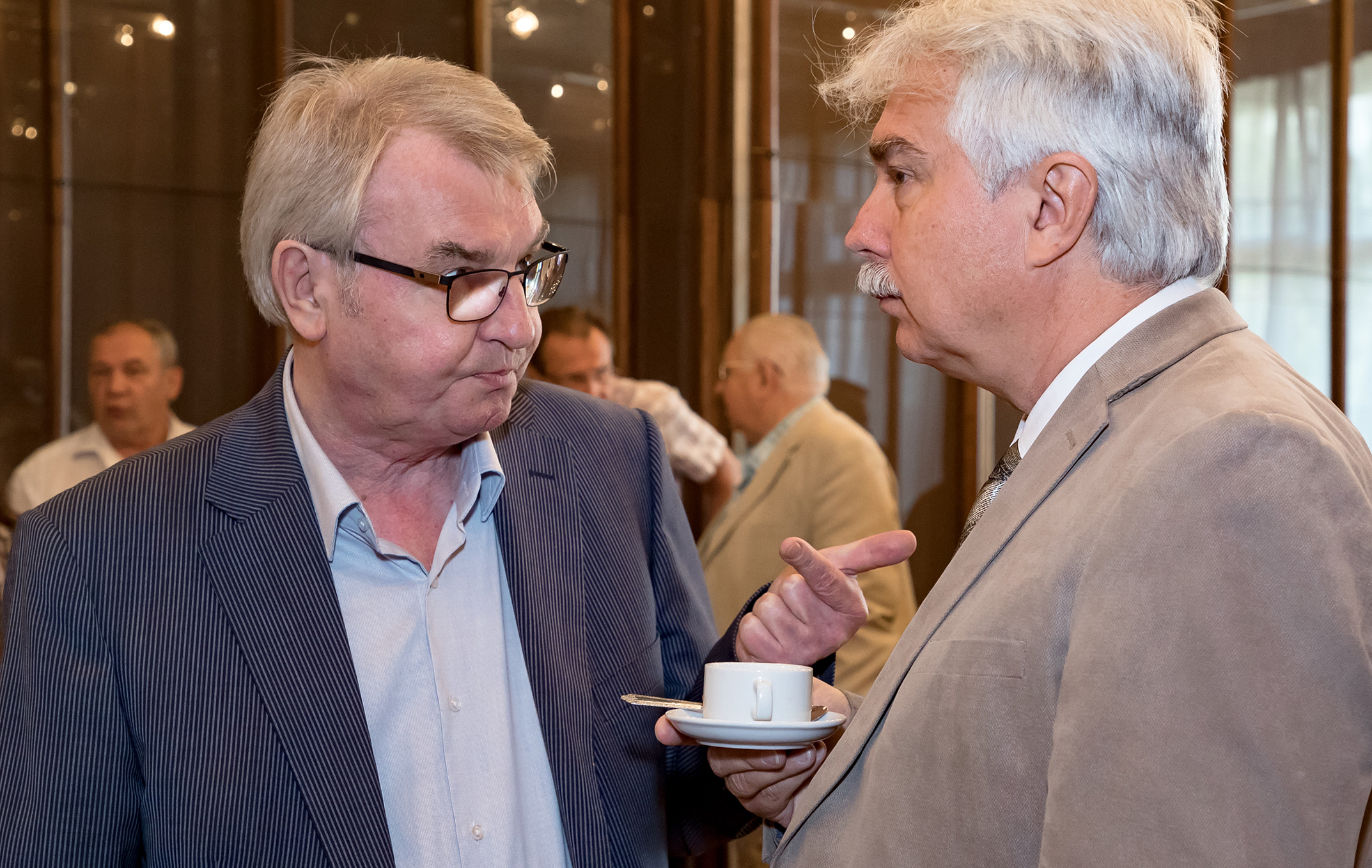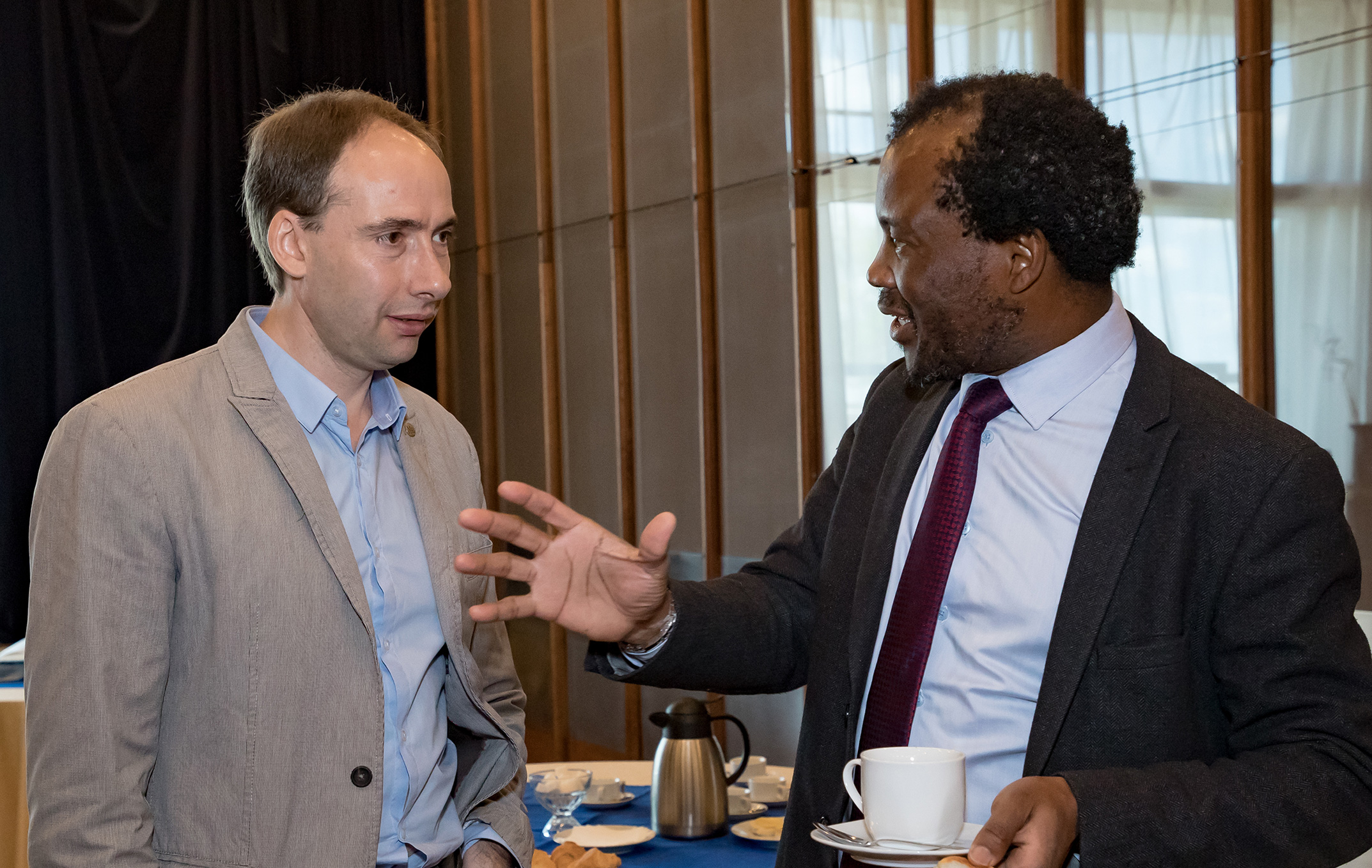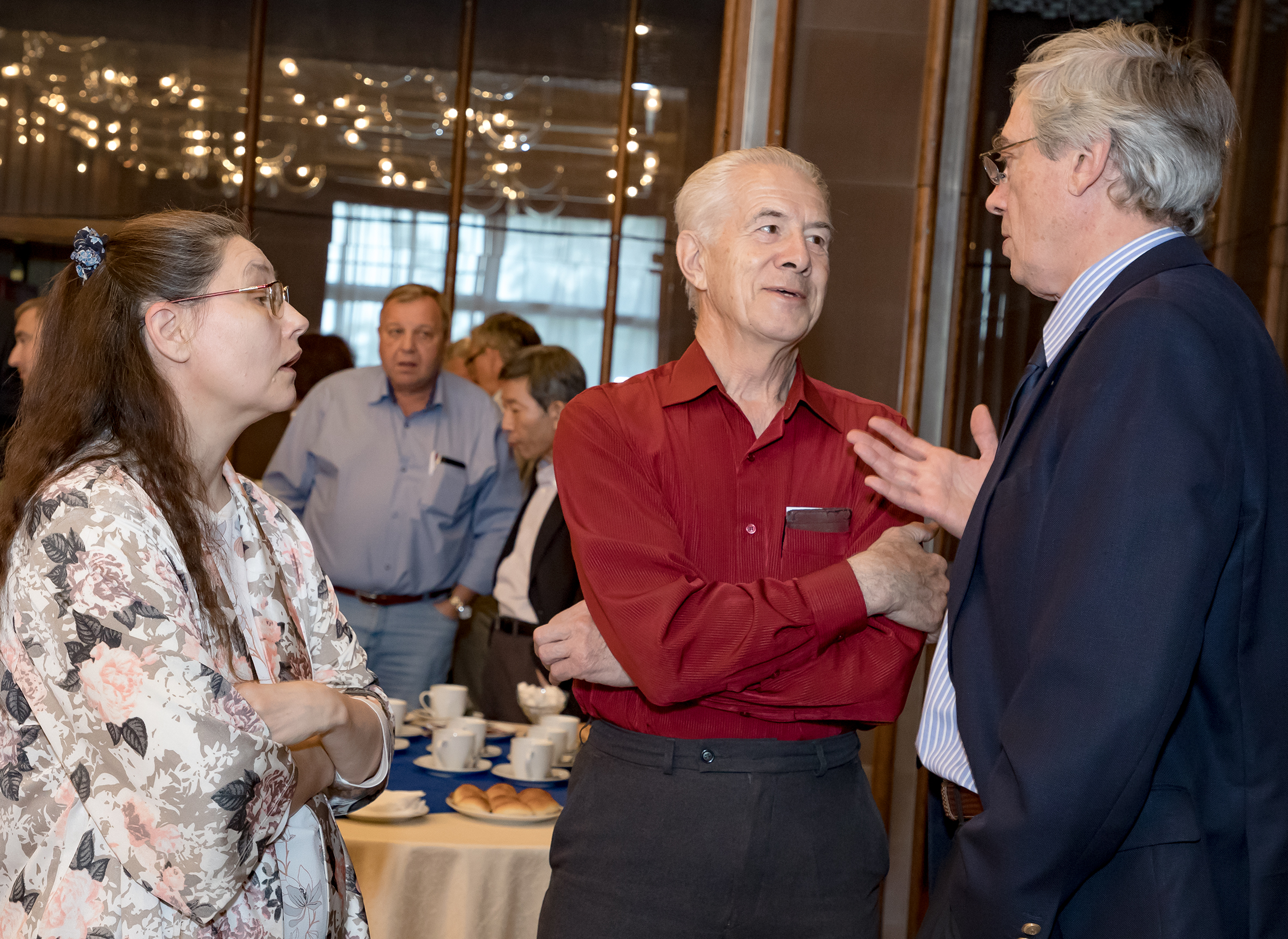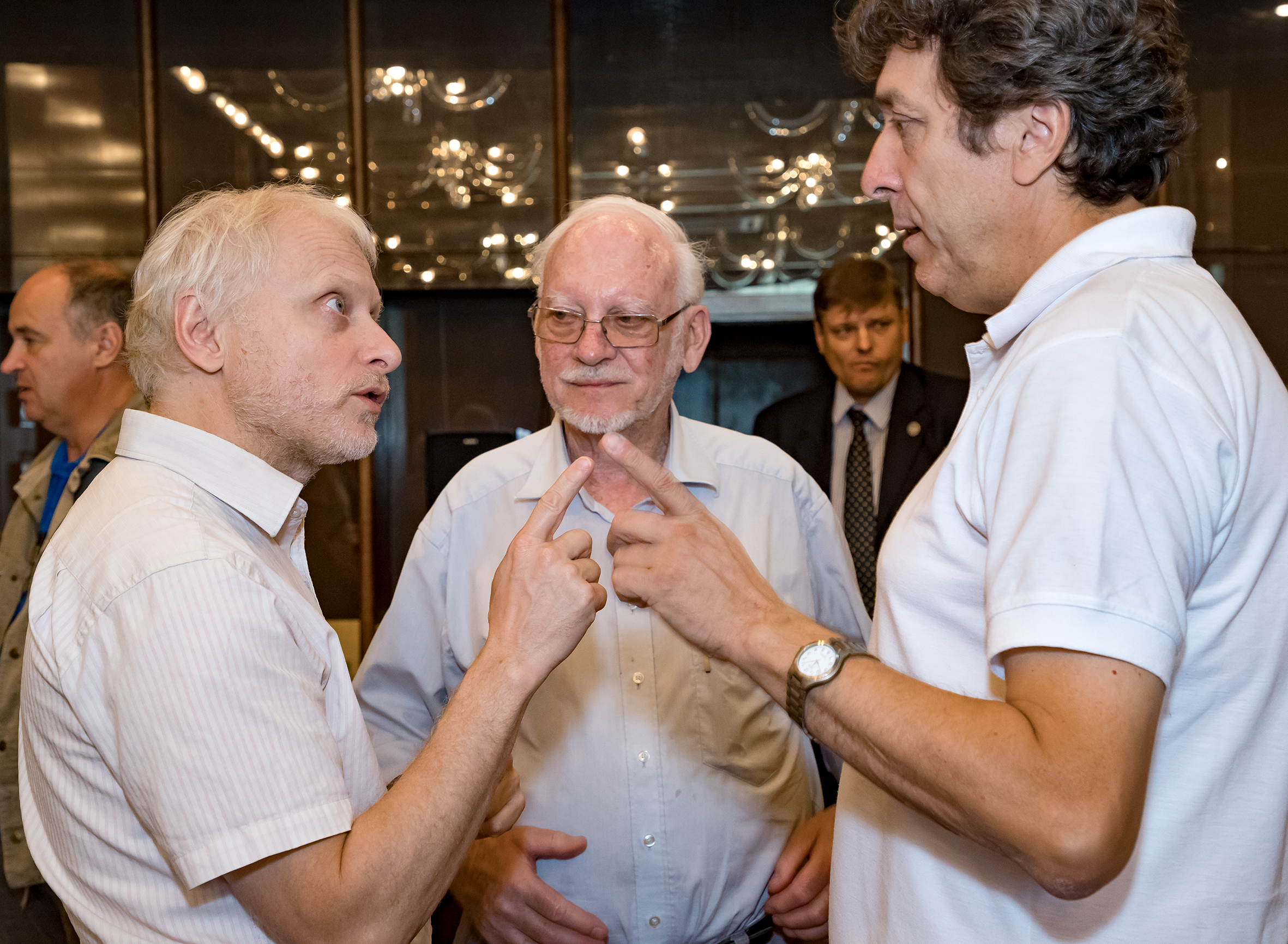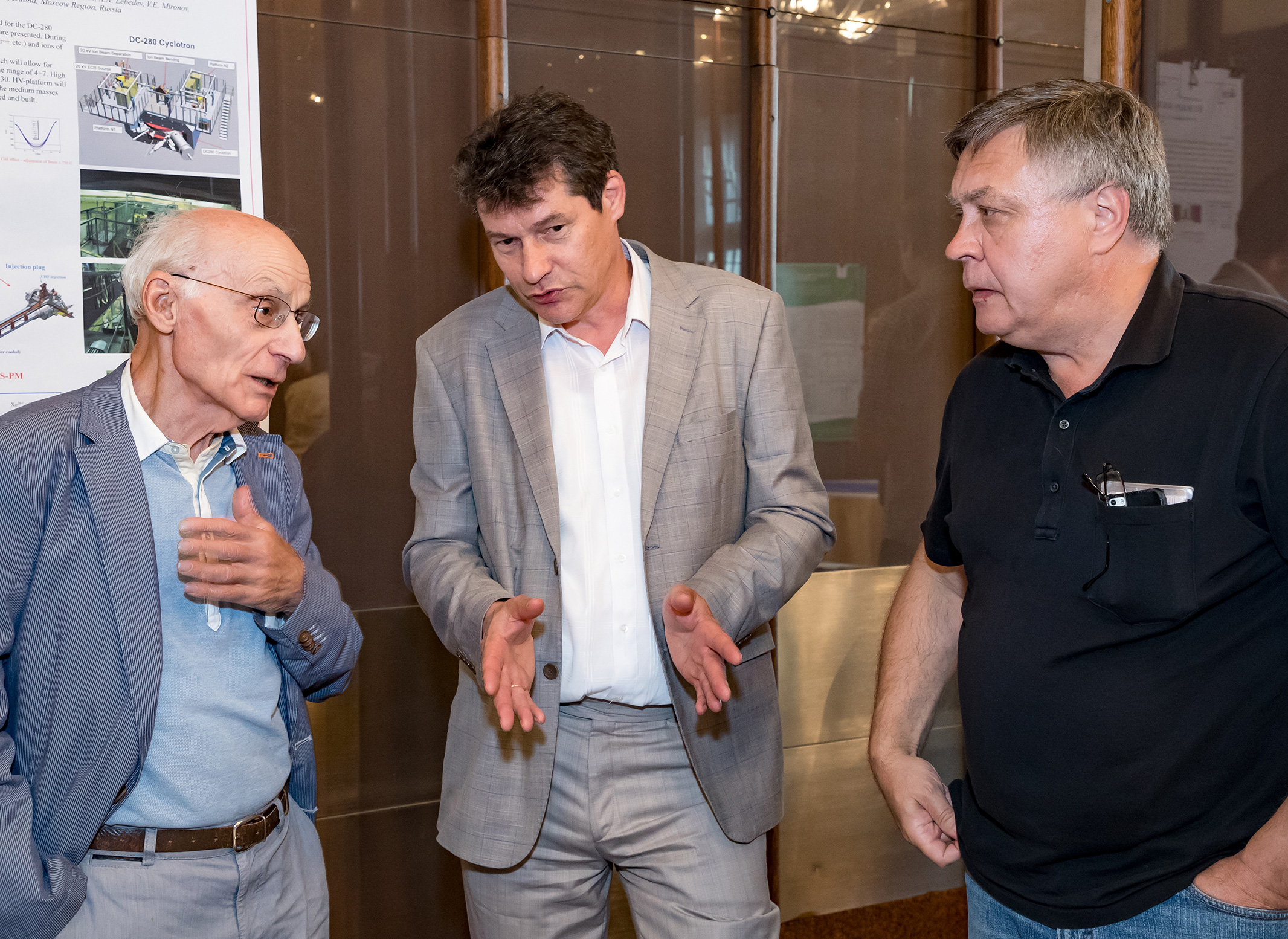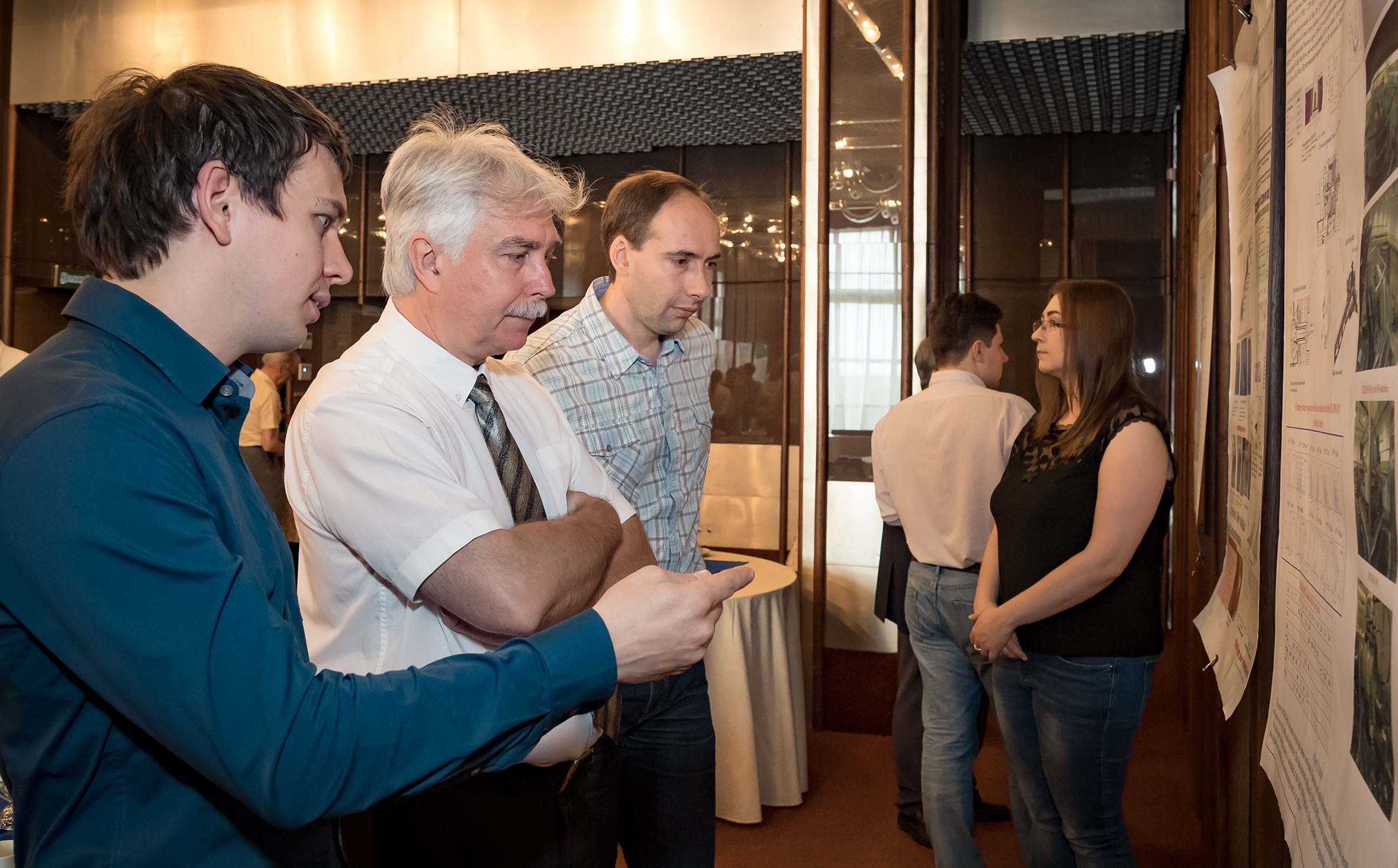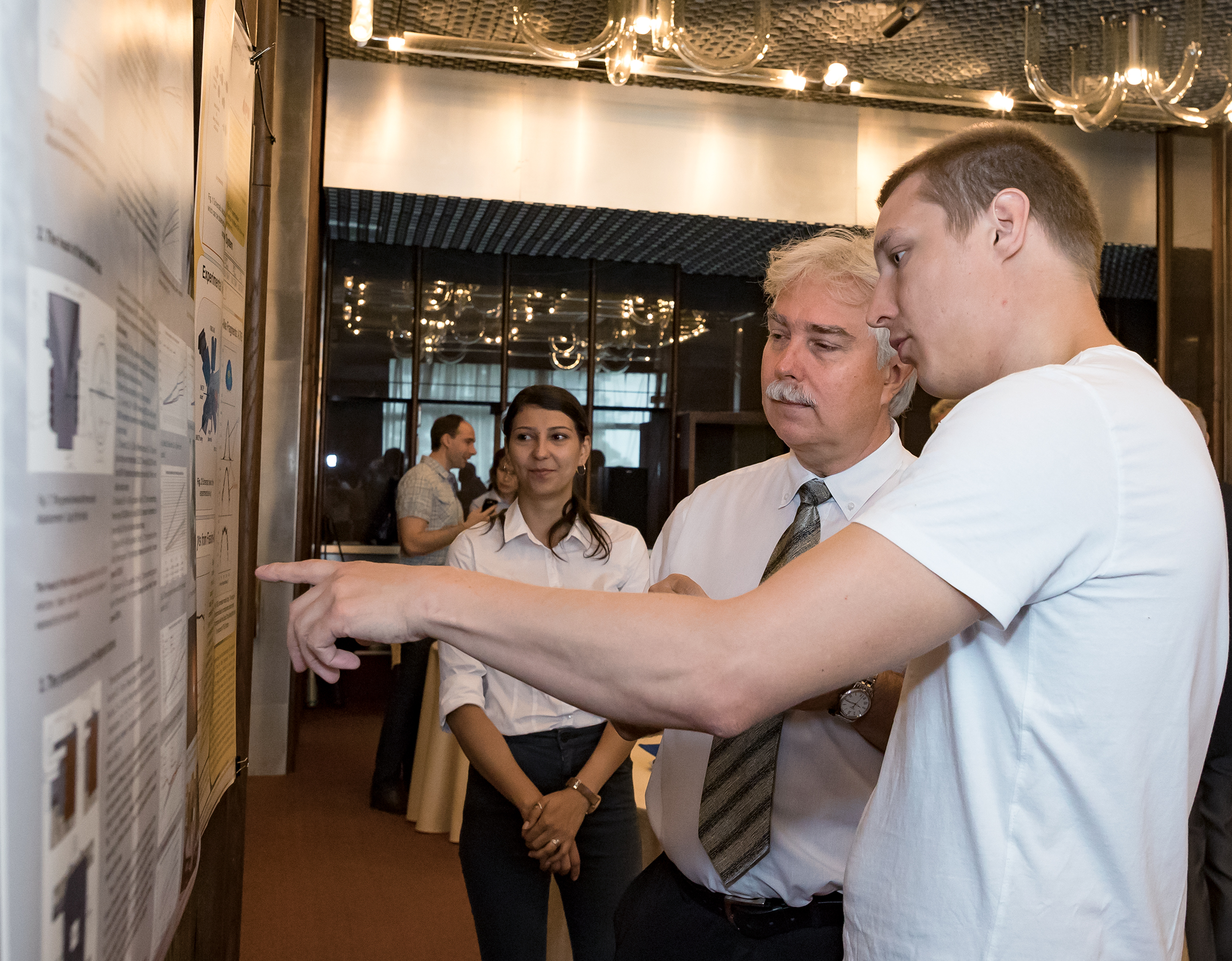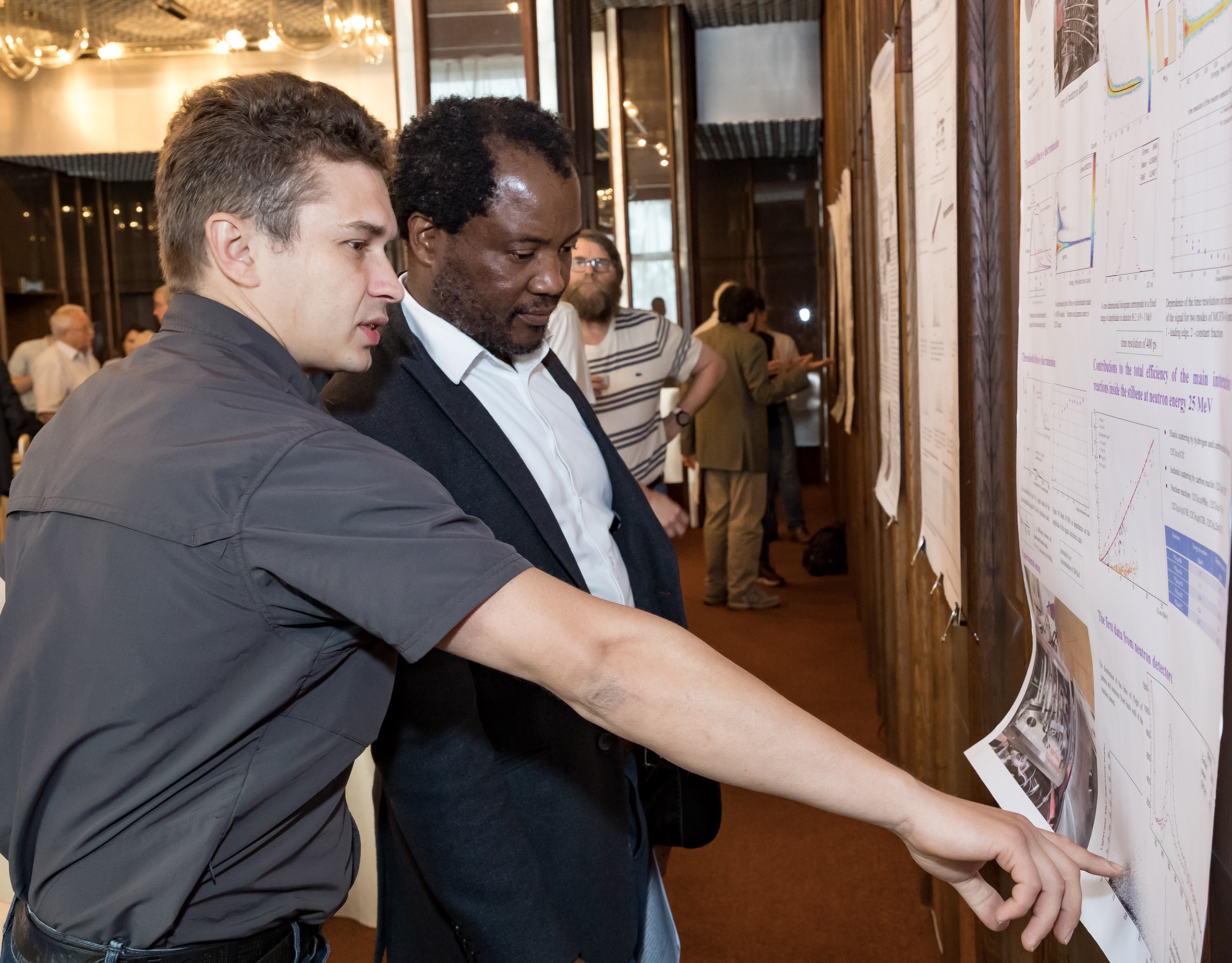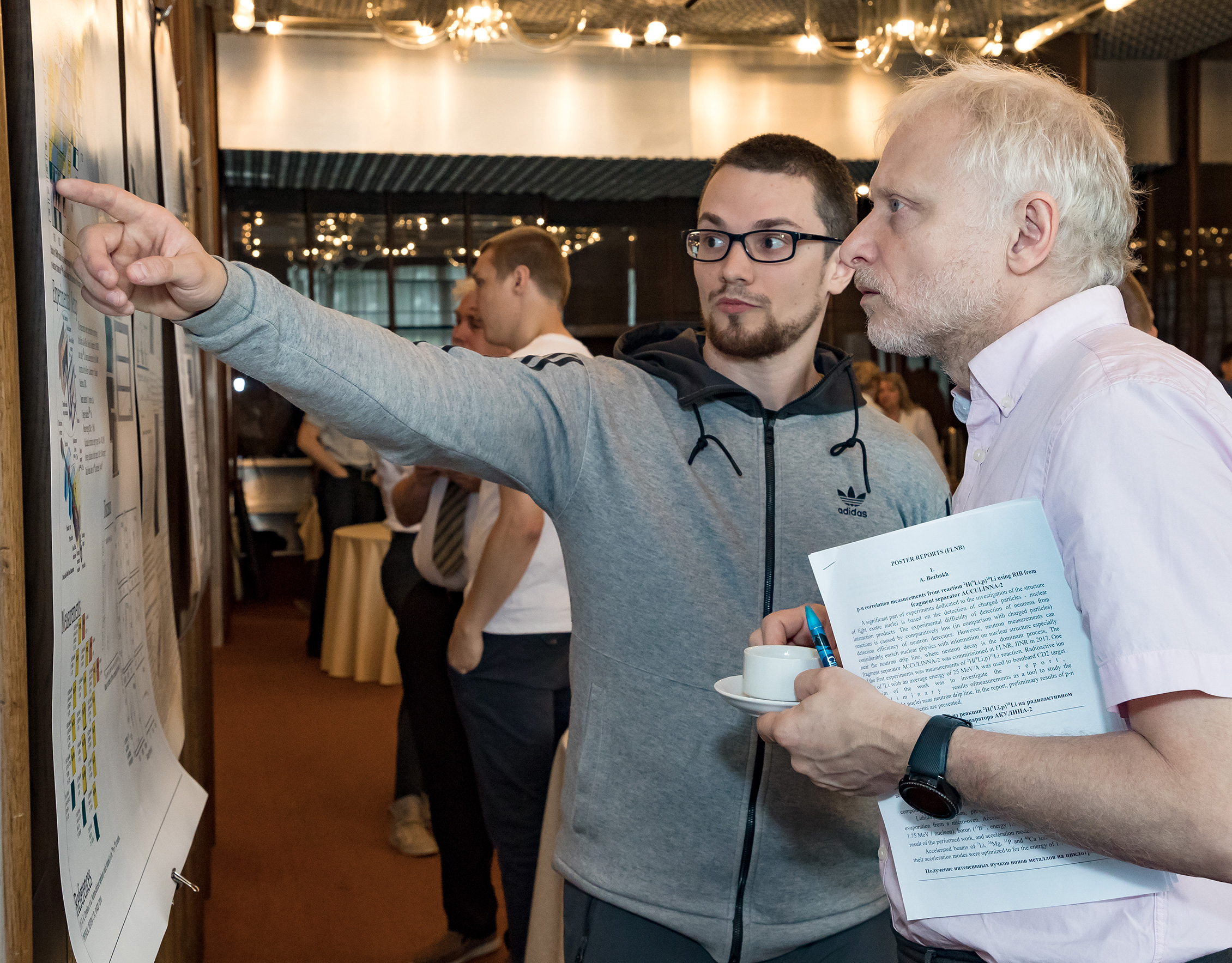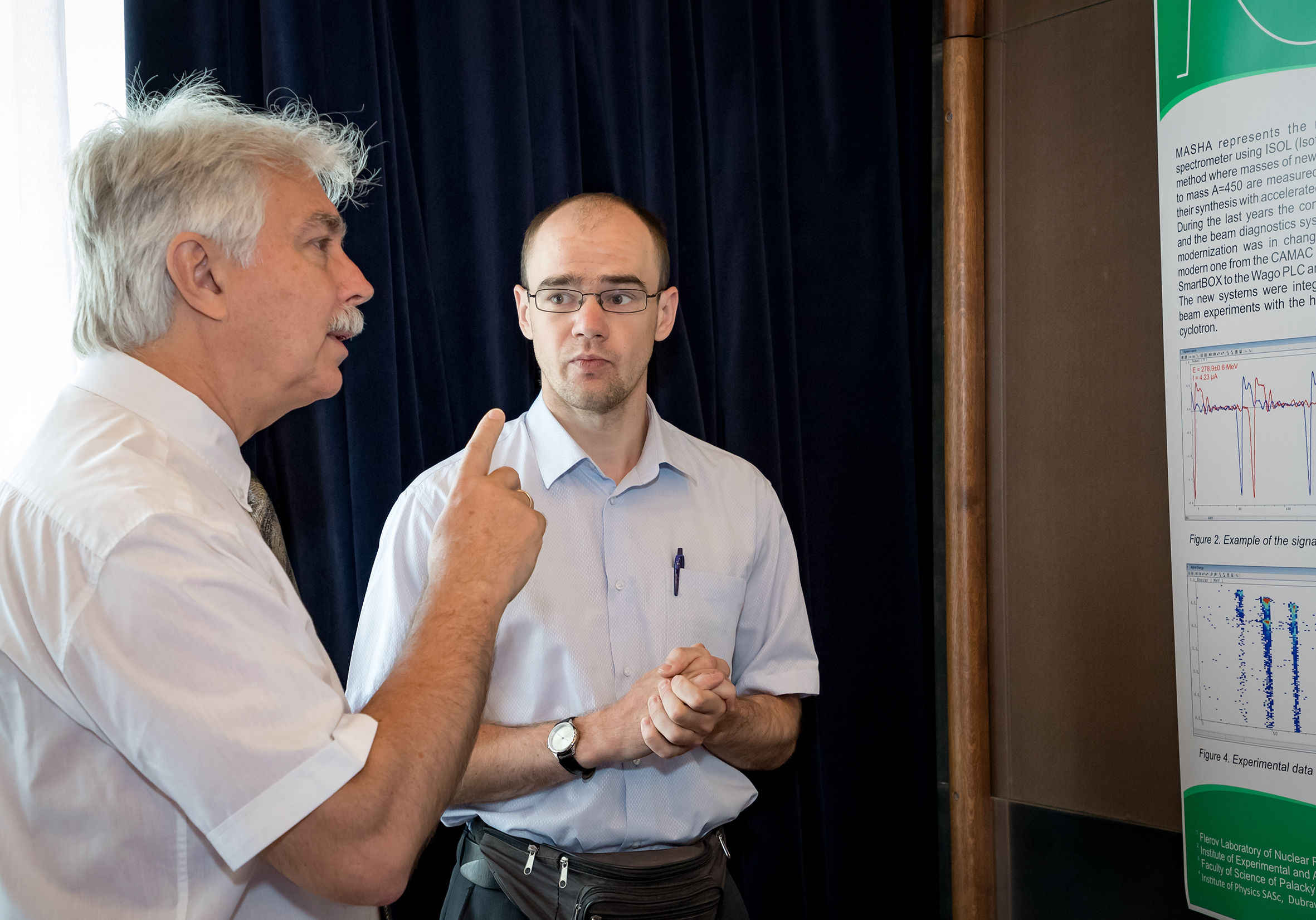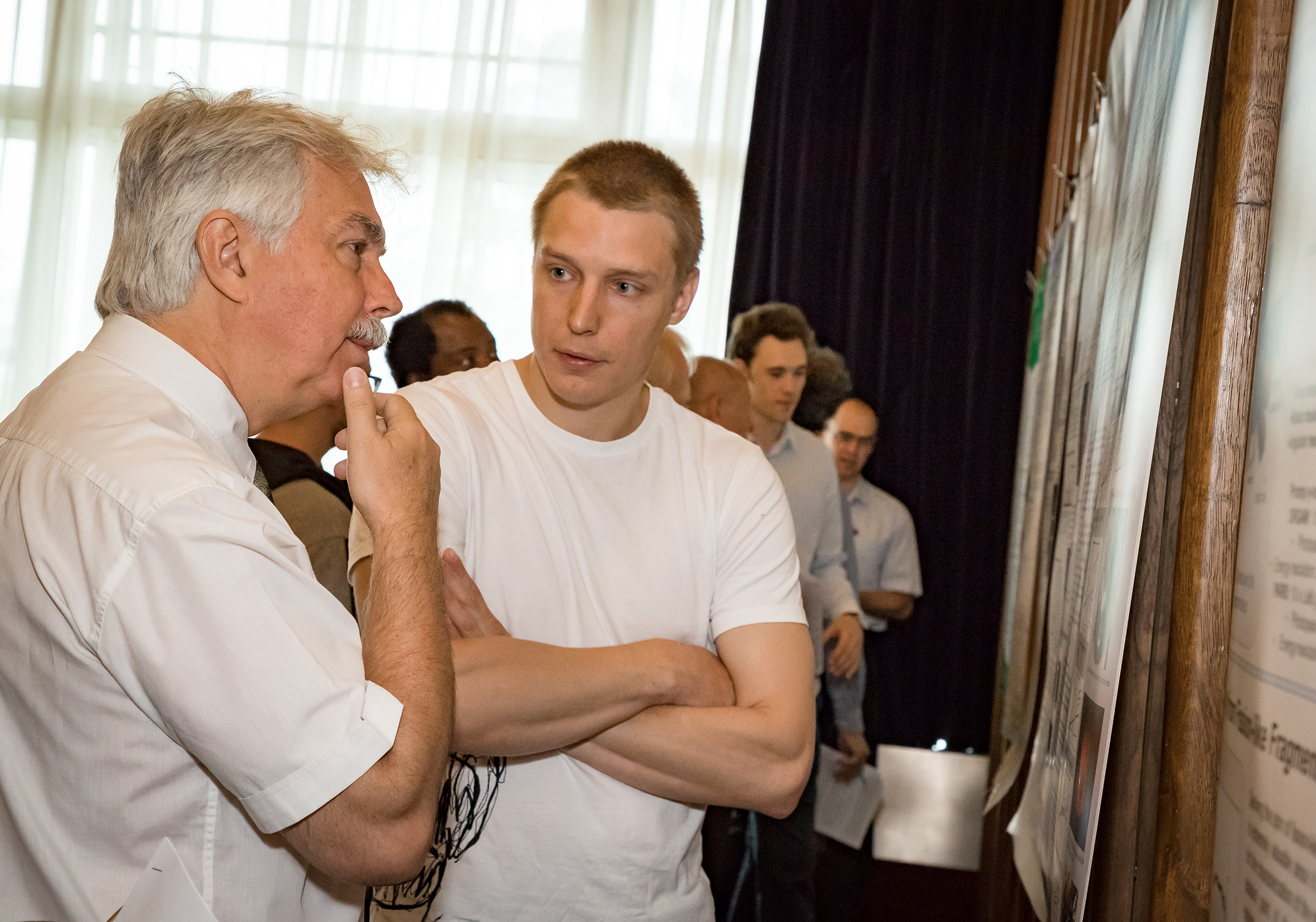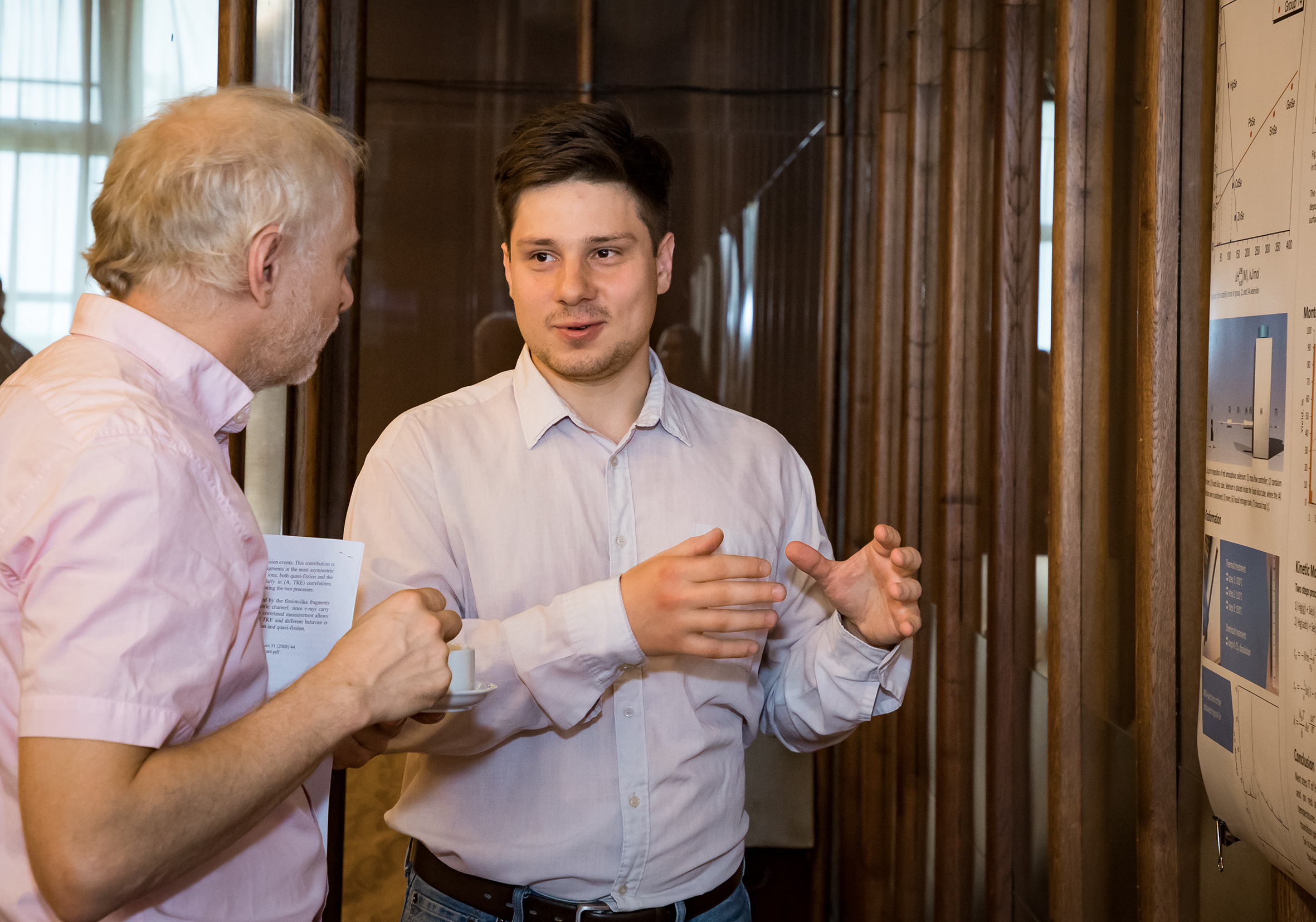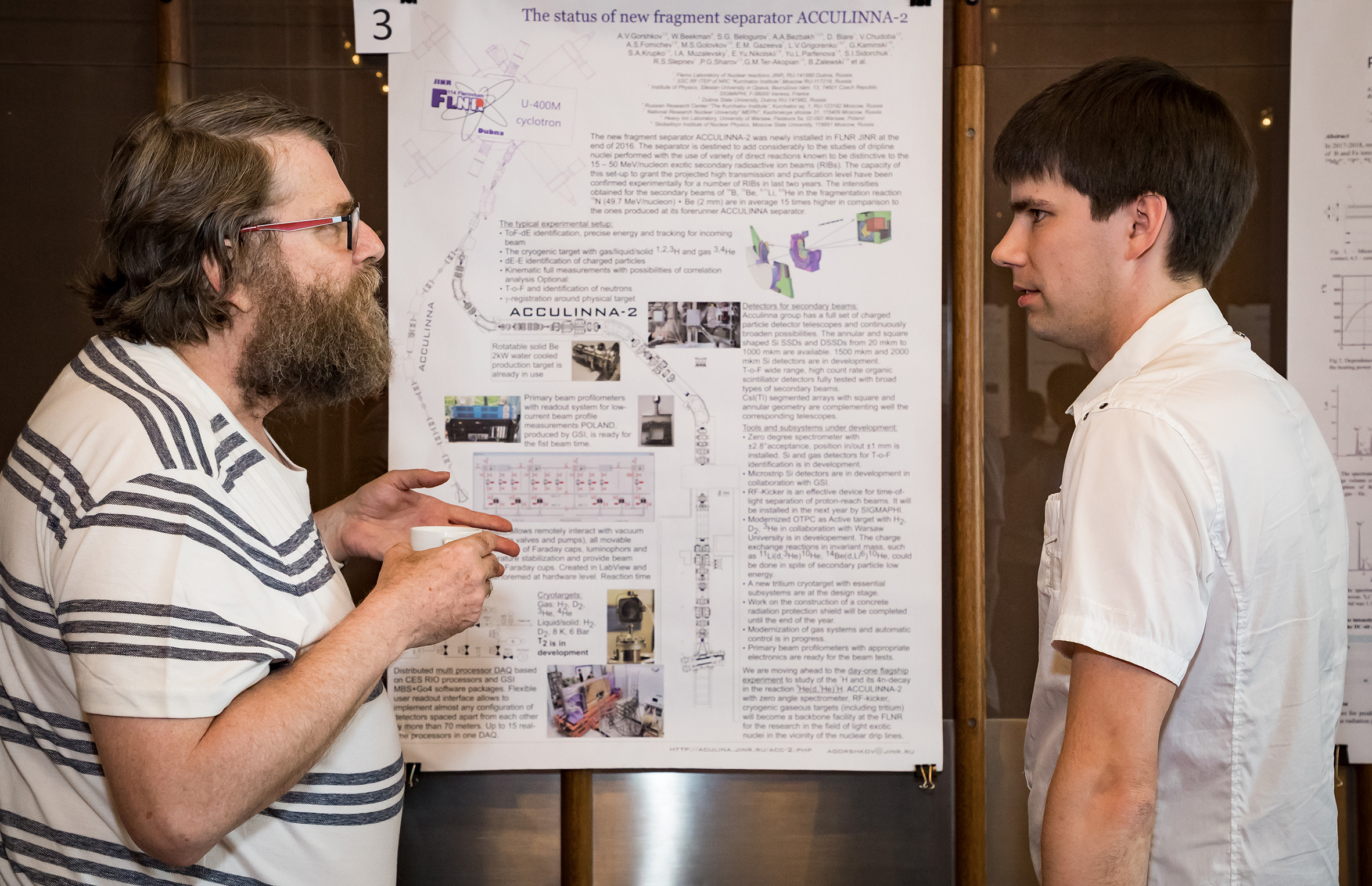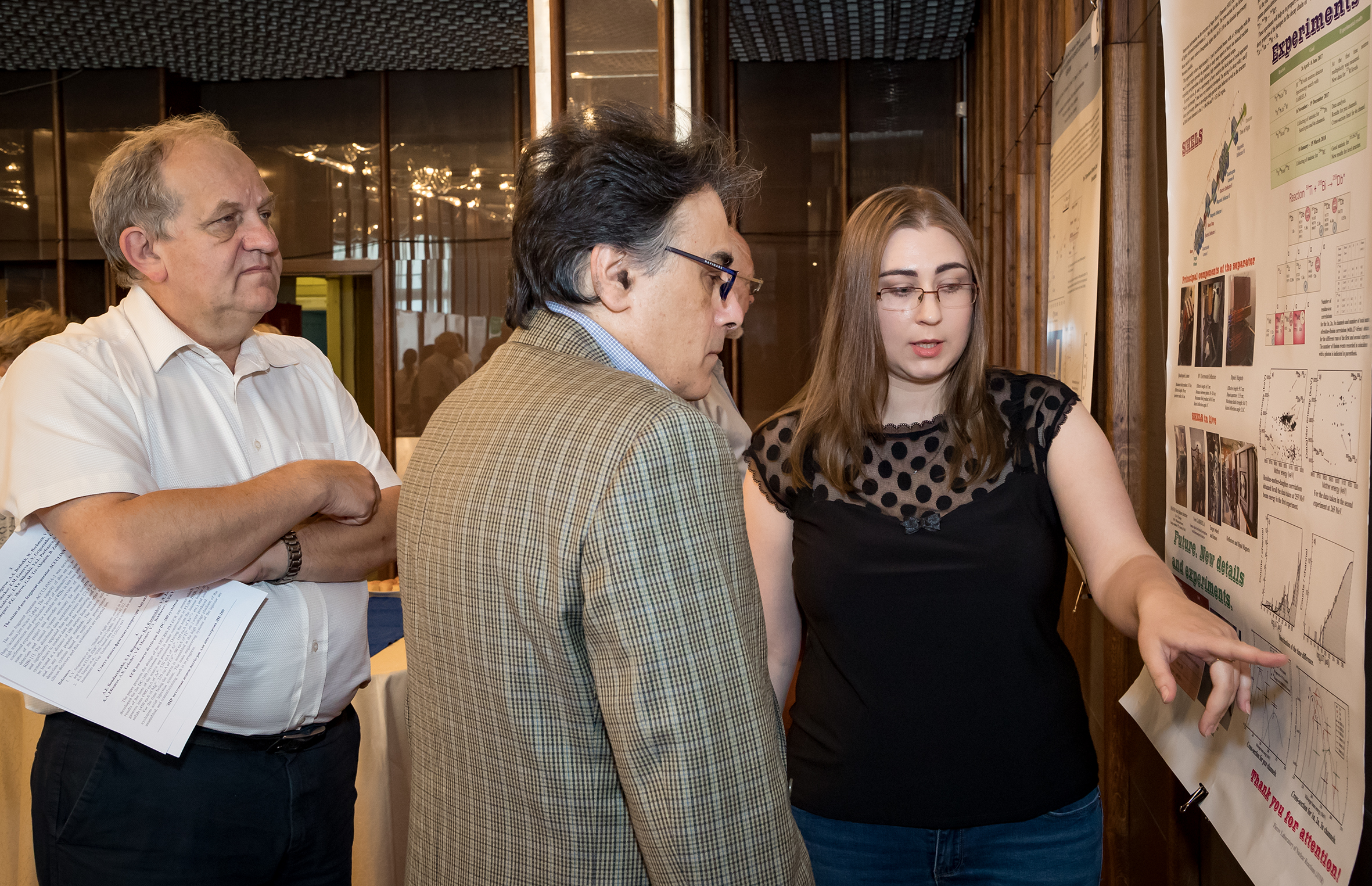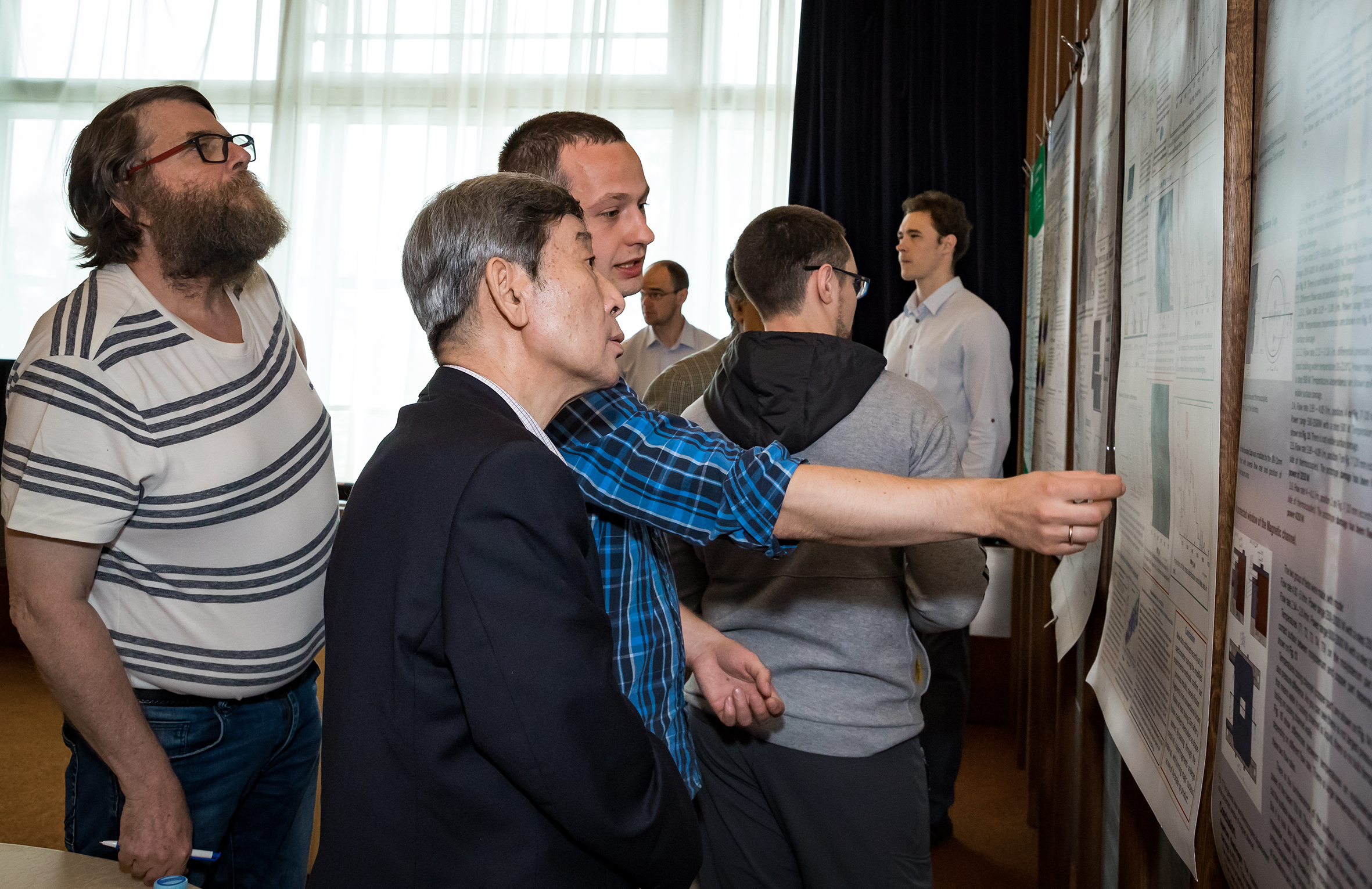PAC NP: UC, accelerators and new physics…
Organization, 04 July 2018
An article of the the JINR Weekly Newspaper about the 48th meeting of the PAC for nuclear physics that was held on 19 – 21 June 2018 in the International Conference Hall, Dubna.
PAC NP Chairman Professor M. Lewitowicz opened the meeting of the Programme Advisory Committee for nuclear physics with the report on implementation of the recommendations of the previous meeting. The programme of the meeting was continued by JINR Vice-Director M.G. Itkis who presented information on the Resolution of the 123rd session of the JINR Scientific Council (February 2018) and on the decisions of the JINR Committee of Plenipotentiaries (March 2018). G.A. Karamysheva reported on the concluding theme “Improvement of the JINR Phasotron and Design of Cyclotrons for Fundamental and Applied Research” that evoked a vivid interest and discussion among the participants of the meeting.
At the two PAC meetings, for condensed matter physics and for nuclear physics, the report on the concluding in 2018 theme “Organization, Support and Development of the JINR Educational Programme” and proposals on the opening of a new theme “Organization, Support and Development of the JINR Human Resources Programme for 2019 – 2023” were delivered by Director of the JINR University Centre S.Z. Pakuliak. Both committees noted in their decisions successful implementation of the UC theme and approved continuity in the opening of a new theme of the Center for implementation of training programmes at the Institute.
The following fields of the UC activities can be considered as the key ones: admission of university students from the JINR Member States to practice in JINR; the programme for applicants; international scientific student schools; international student training programmes in JINR fields of research; summer student programme.
The most significant aspect of the UC activities is training and professional development programmes. To train engineers, the scientific and engineering school has been working in the University Centre since 2014, on the basis of which laboratory practices of the advanced level are held in the fields of nuclear physics, radiation safety, particles detectors, vacuum, super-high frequencies, magnet systems, electronics and automation, there is a so-called “study” section of the LINAC-200 accelerator. JINR UC organizes professional development for the JINR staff at various courses and seminars held by other educational centres.
Thanks to the staff of the Department of Development and Establishment of educational programmes under the direction of Professor Yu.A. Panebrattsev, the edu.jinr.ru website is being constantly developed and updated with new content. The website is available to a wide audience and contains computer models of the JINR facilities demonstrating their operational principles and design features, the Virtual Laboratory of Nuclear Fission, video tutorials “NICA – universe in the laboratory”, lectures on heavy ion physics.
A special attention in the UC is paid to programmes of popularization of science providing growth of interest to science in general and to activities of the Institute in particular. Scientific schools for teachers of physics and high-school students, scientific festivals, introducing visits to JINR for teachers of physics and high-school students are considered to be such programmes.
Concluding his presentation, UC Director S.Z. Pakuliak noted a growth in number of participants of all the programmes held in the University Centre that generally indicates the trend of growing interest in the activities of JINR in recent years.
A separate set of reports was devoted to the projects of the Flerov Laboratory of Nuclear Reactions. I.V. Kalagin and S.M. Lukianov reported on the status of the Factory of Superheavy Elements and the MAVR facility. A.S. Fomichev told the participants of the meeting about commissioning and the first results from the ACCULINNA-2 fragment separator.
Scientific reports were traditionally carried at the meeting. M.V. Frontasyeva delivered the report “State-of-the-art and future prospects of neutron activation analysis at the IBR-2 reactor”, A.P. Kobsev reported on investigation of subsurface layers of solids with the help of charged particle beams accelerated at the EG-5 electrostatic generator, and A.K. Nasirov delivered the report “Appearance of quasifission in reactions of heavy-ion collisions”.
Agenda of the last day of the meeting included poster presentations by young scientists and adoption of PAC recommendations.
M. Lewitowicz, Chairman of the PAC for nuclear physics, commented on the milestones of the meeting.
– What are the main peculiarities of this PAC meeting in your opinion?
– We have discussed two major themes in detail and for a long time. The first one considered upgrading of the Phasotron and main accelerators for applied research in the Laboratory of Nuclear Problems. The second one was connected with the Factory of Superheavy Elements in the Laboratory of Nuclear Reactions. These themes are very different. The first one is closer to the status of a project, I would say. It has been just launched, there are still too many questions concerning the way it should be continued, it has been prolonged for a year in order to get the whole description of the project that the laboratory will prepare over one PAC meeting.
The second theme, unlike the first one, is close to be concluded. The Laboratory of Nuclear Reactions is undergoing procedures of all final tests, getting state licences to start the first experiments at the new cyclotron. Questions for this project are radically different: what physical programme will be implemented when the accelerator and all the facilities will start operation in all the experiments. So, we had two major themes, absolutely different.
The second peculiarity of the meeting is that we are preparing a new PAC meeting that will be partially held jointly with the PAC for particle physics. The general theme of the meeting will be neutrino physics. It is a very interesting field of the research programme of the Institute that presupposes many new projects. It develops at a fast pace and includes experiments in extremely high energy physics in CERN and other centres as well as research in which methods of nuclear physics for study of neutrino and behavior of these particles in various conditions are used.
– What impressions did presentations of young scientists make on you?
– Perfect! Not only me but also my colleagues agreed that it was a really interesting meeting. Young scientists prepared their poster presentations very carefully and using all the details, almost all of them demonstrated good language proficiency and ability to present their work. It was not only interesting but also made it easy to single out the best posters in comparison with previous meetings at which too many posters had been presented so that it was difficult to choose the best ones in a relatively short time. This time quality and number of presentations were sufficient. I think those who prepared this part of the meeting had worked well.
– Scientific reports of this meeting concerned so different areas…
– One cannot but agrees with it. They truly vary. All of us very liked the report by Marina Frontasyeva on physics with neutrons at the IBR-2 facility and this was mentioned in the PAC Resolution. We got many interesting scientific information from the report, and presentation of the report was impressing. We were not bored even for a single minute during the presentation. Experiments carried out by these specialists are interesting not only in terms of physics; their results have significant application in JINR, Russia, European countries and all over the world.
Other reports also demonstrated brilliant results. Aleksander Kobsev presented experiments that are carried out with alpha particles and protons accelerated at the EG-5 electrostatic generator at which standard methods are used but for investigation of subsurface layers of various materials. The report by Avazbek Nasirov concerned a theory that is aimed to explain quasifission in reactions of heavy-ion collisions. It is also a topical field of research but the results show that we do not understand everything in this process. There is a lot of work ahead to understand how nuclei merge, especially for super-heavy isotopes. Its mechanism has not been investigated in details yet.
– Marek, your meeting with the JINR Directorate is traditionally closed. Why? What do you discuss at these meetings? What tasks do you set?
– We usually ask questions concerning general problems of the Institute and its laboratories connected with work of PAC, of course, which cannot be asked in the course of PAC meetings. In the frames of the agenda, we discuss many topics, and such questions arise as well, but during or after reports. Time specially allocated for such meetings allows us to communicate directly with the members of the Directorate, and such discussions are very useful. As we delve deeply into the details of different projects, a broad view from the standpoint of the whole Institute is very helpful in making decisions. Before the present meeting, I asked members of the Committee to prepare their questions to the Directorate. Unfortunately, we did not have time to sum them up and present them at the meeting. We will try to do this at next meetings.
– What else would you like to add to your comments?
– From meeting to meeting, we are trying to improve the way of holding them. This time we have decided to prepare topics of discussion for the next meeting that will be devoted to the projects on neutrino physics. So, we have changed the procedure a little bit.
– As a rule, the visible work that is carried out at meetings is preceded by a large “off-screen” preparation with participation of reviewers, experts, those JINR employees who are directly involved in organization of PAC meetings.
– It is true, and we want to involve PAC members in these activities so that our reviews on the projects will be of a higher level.
Evgeny Molchanov, JINR Weekly Newspaper
Photos by Elena Puzynina, JINR Scientific Information Department
